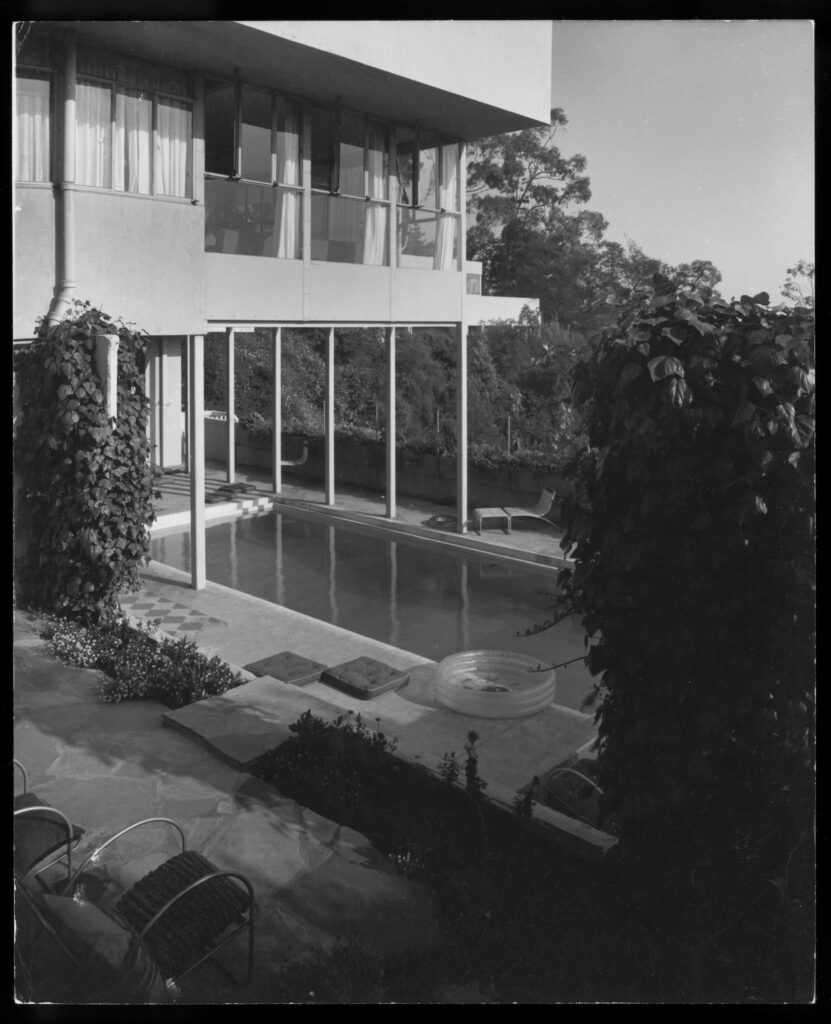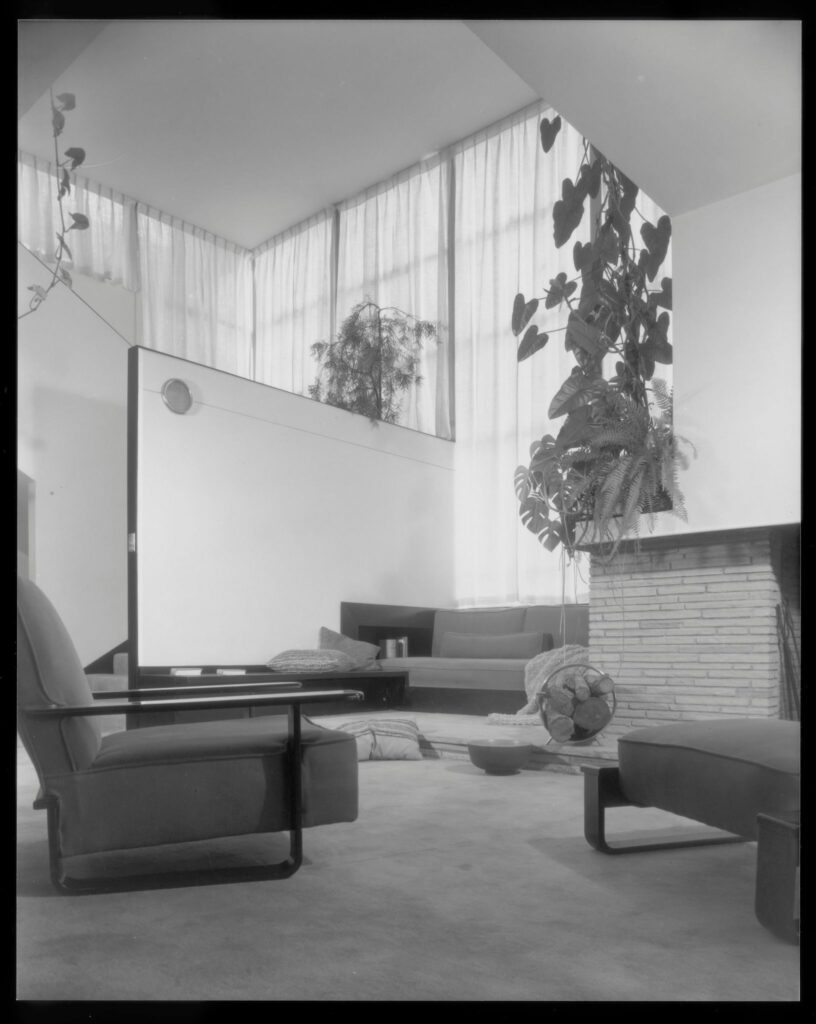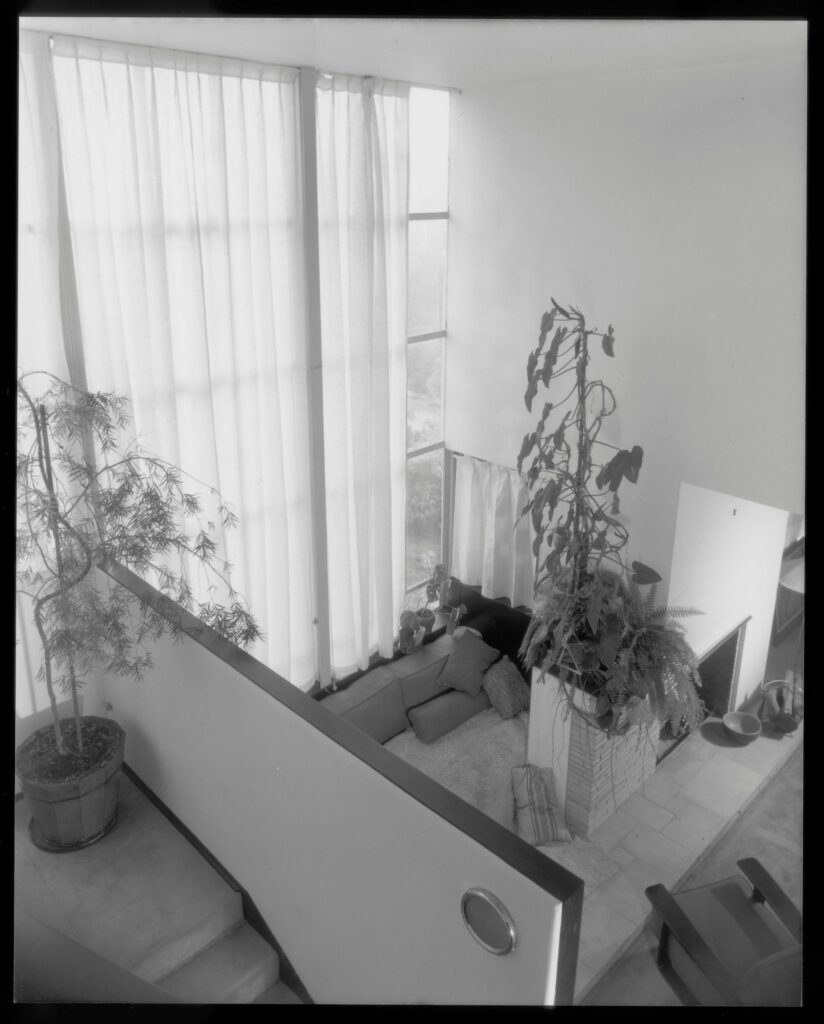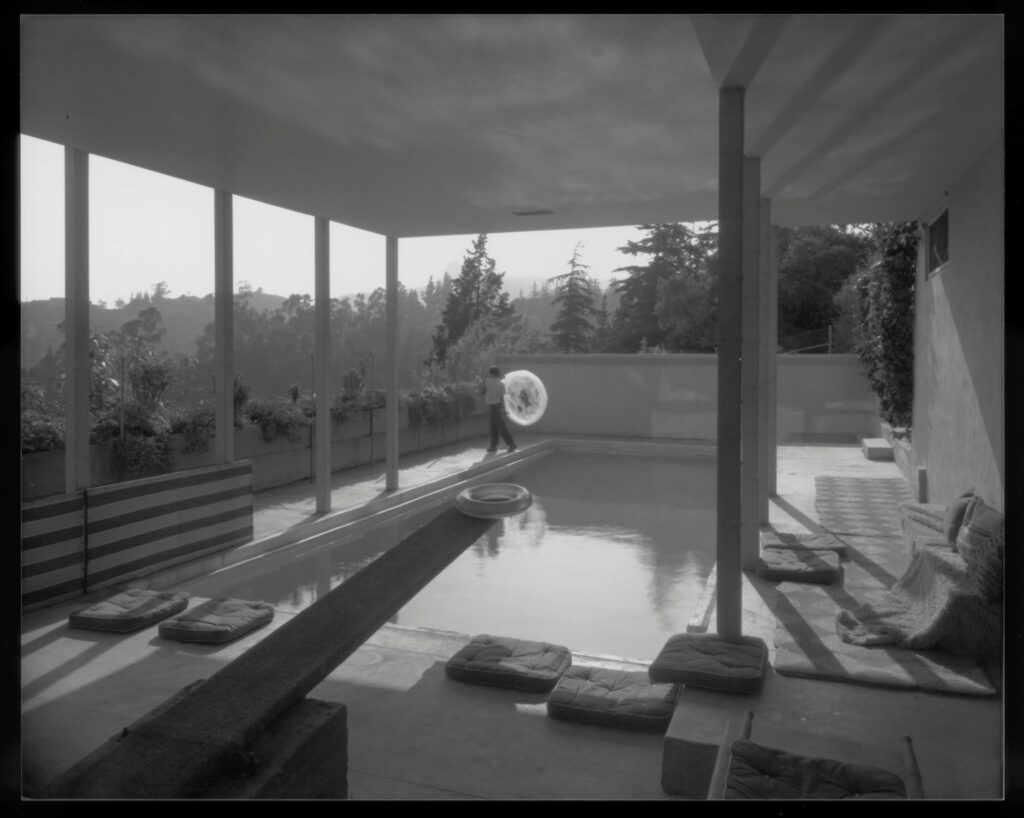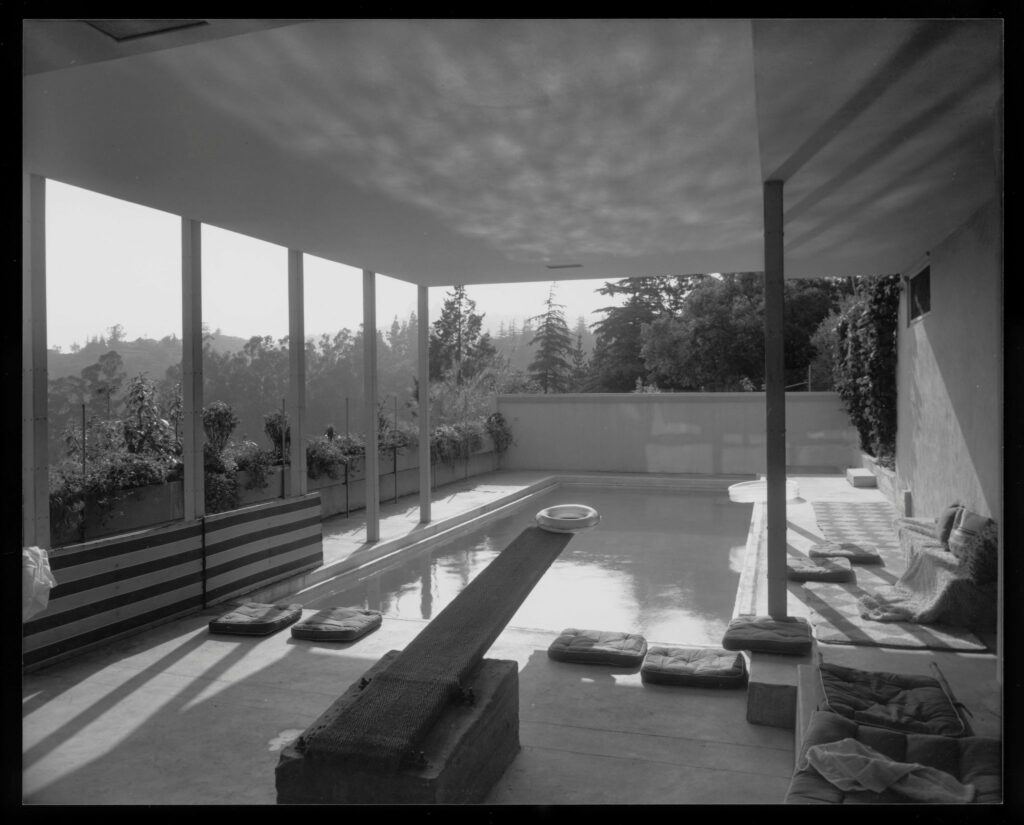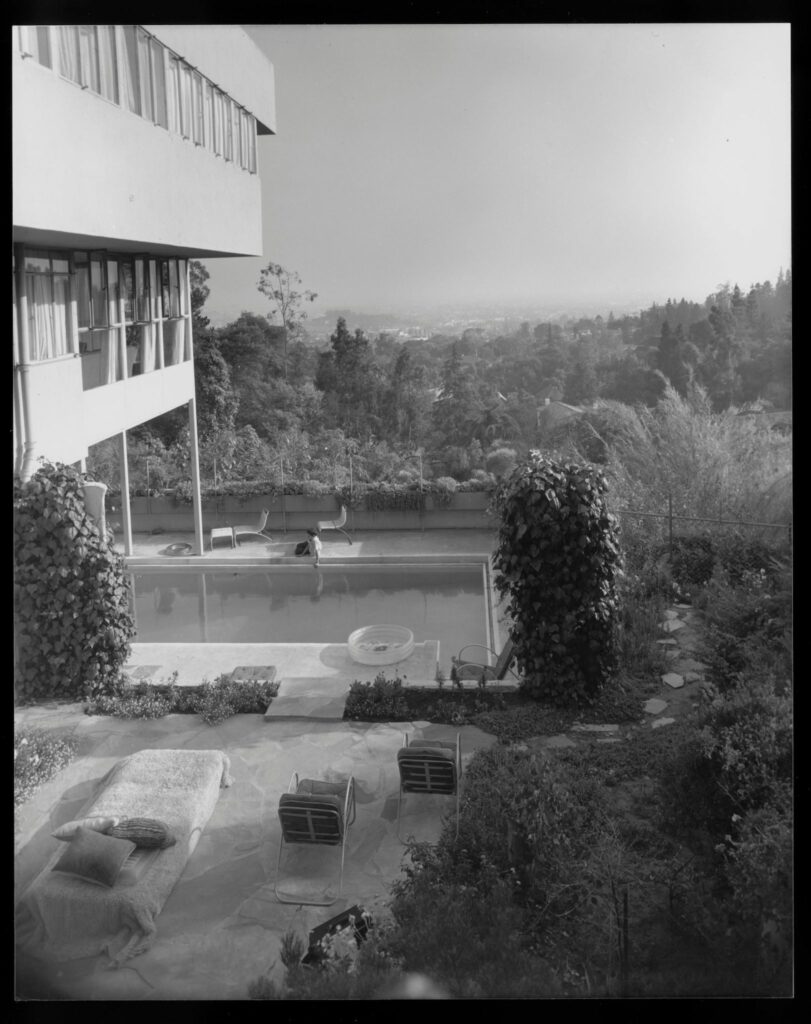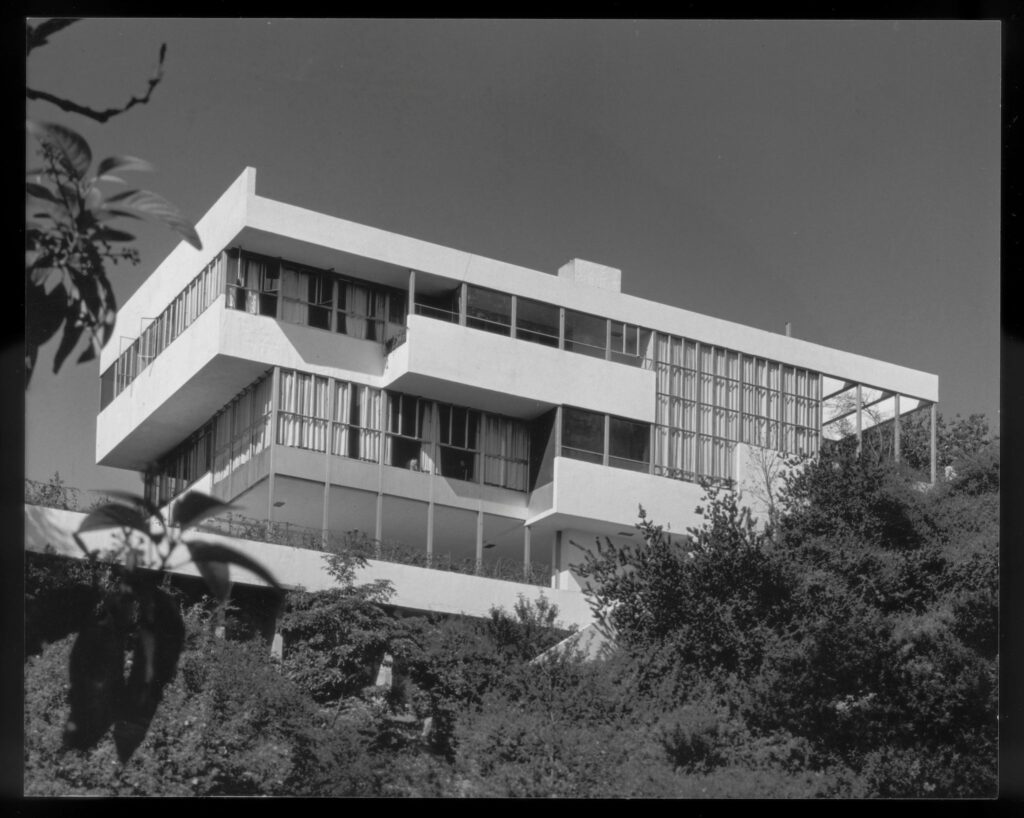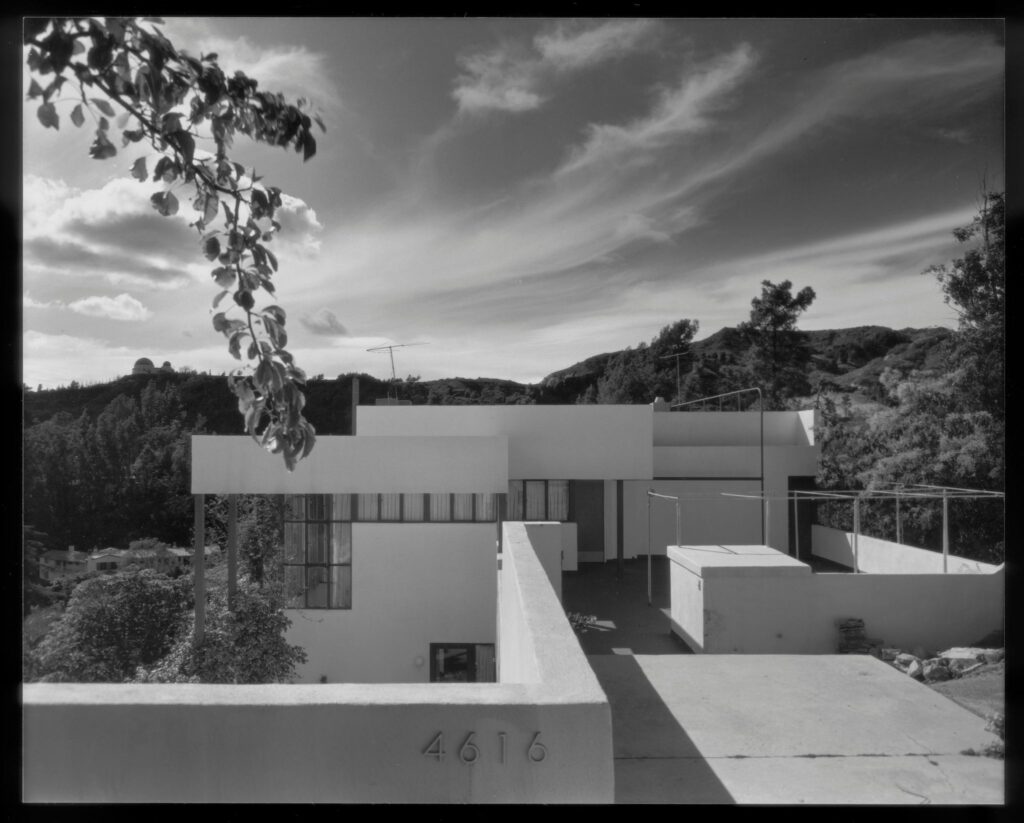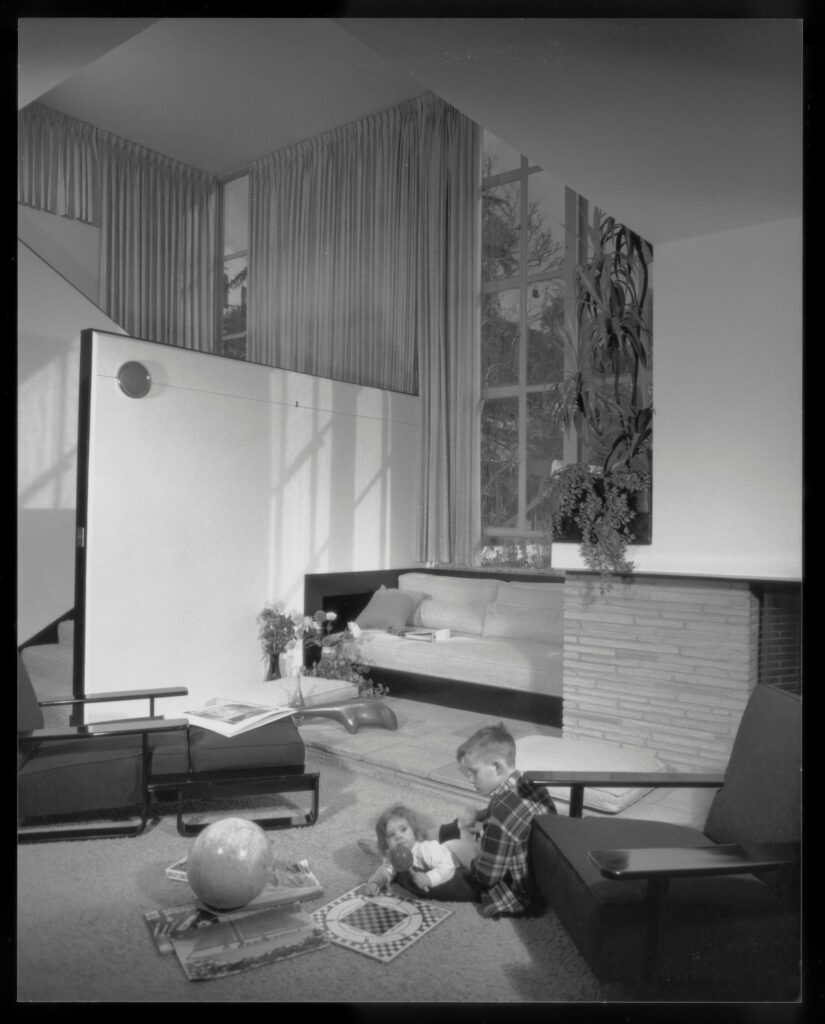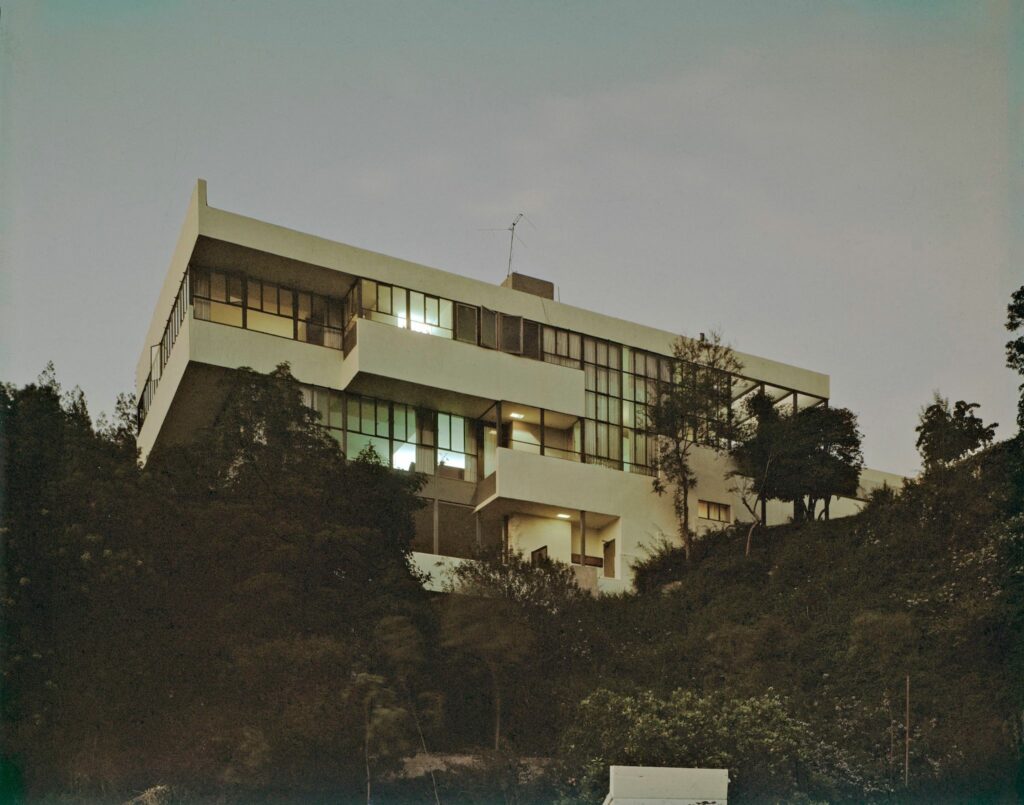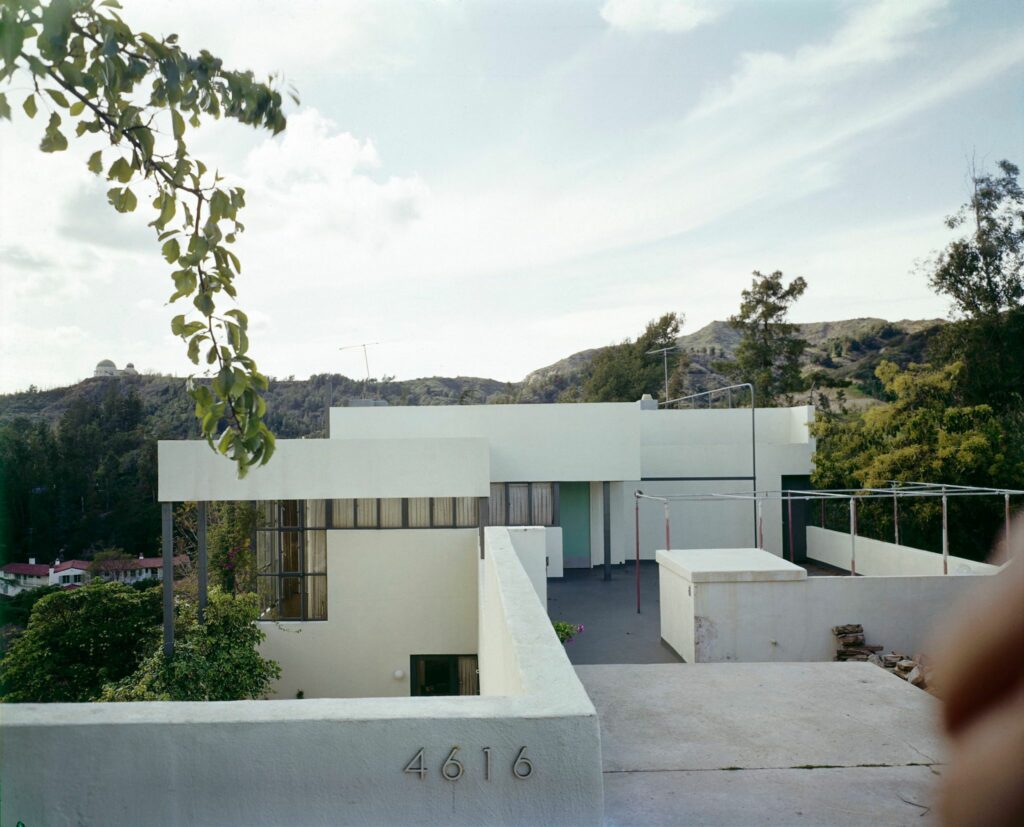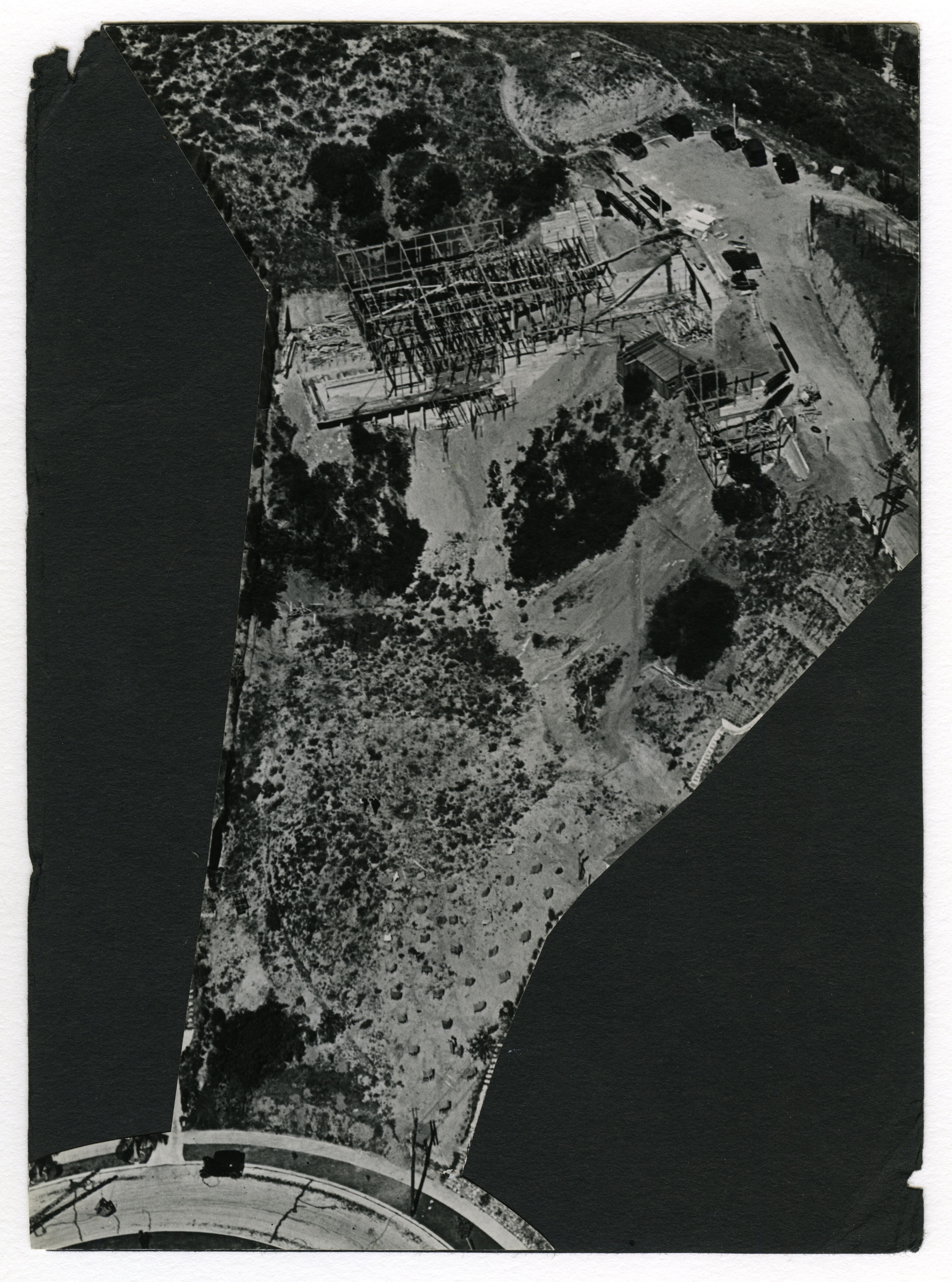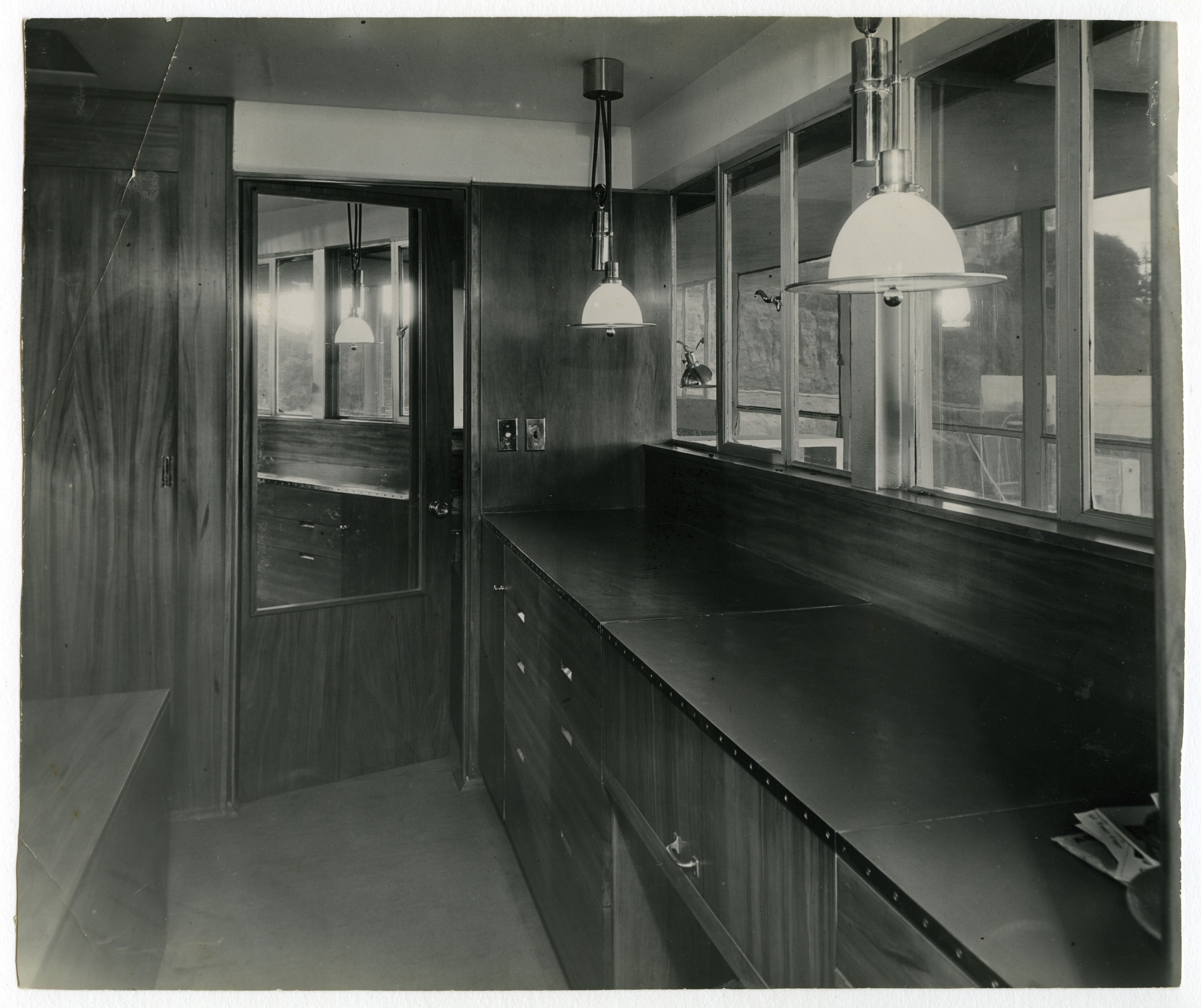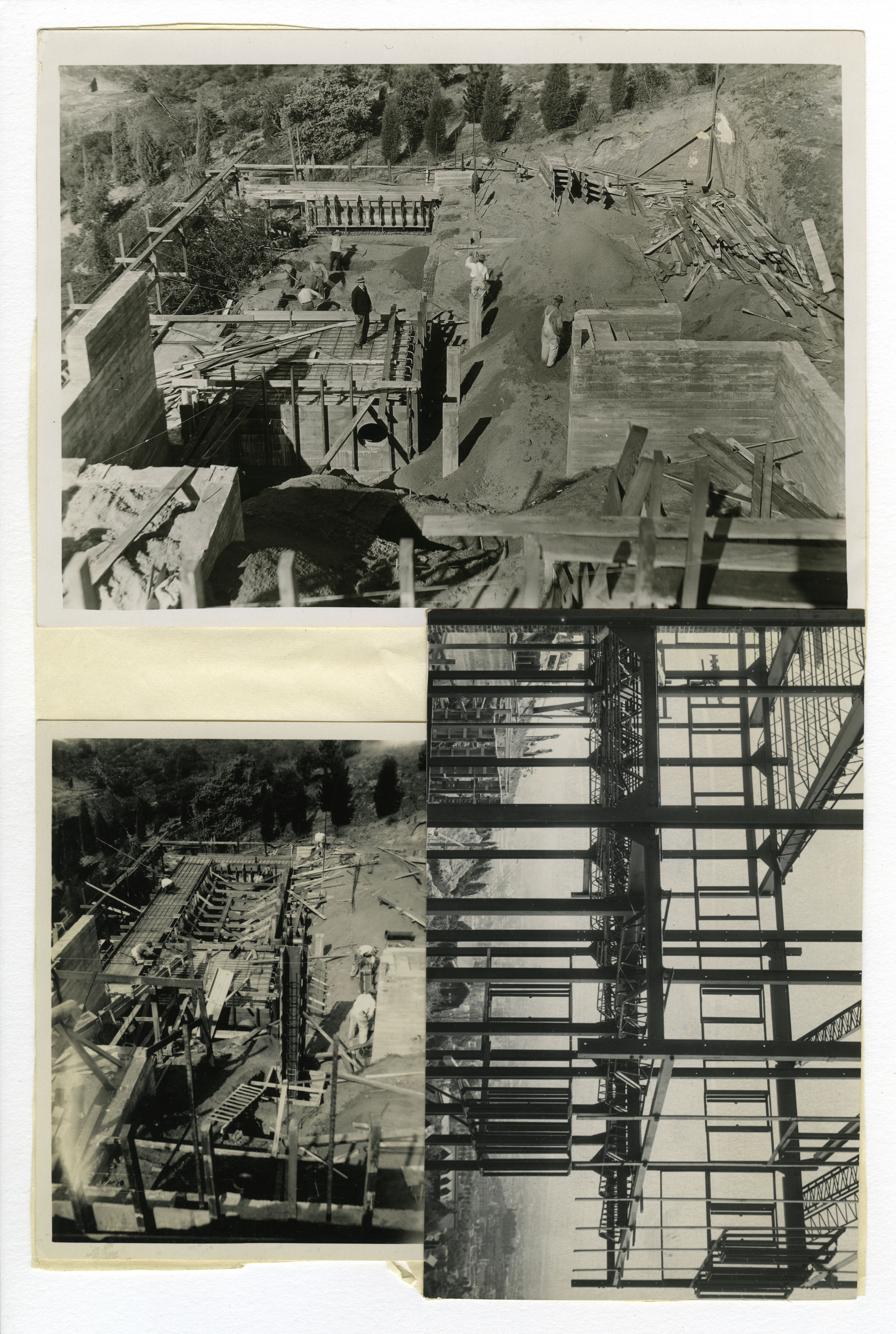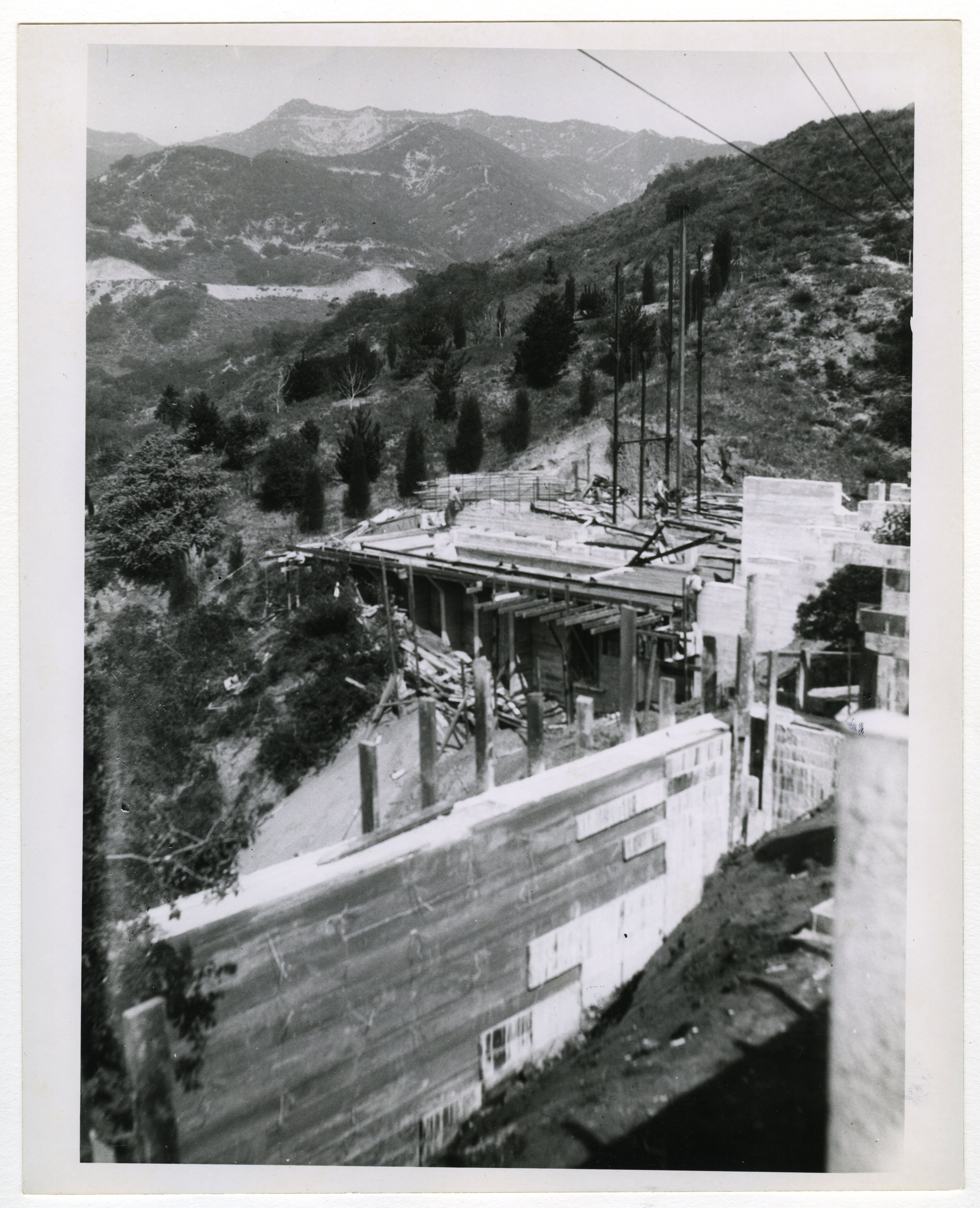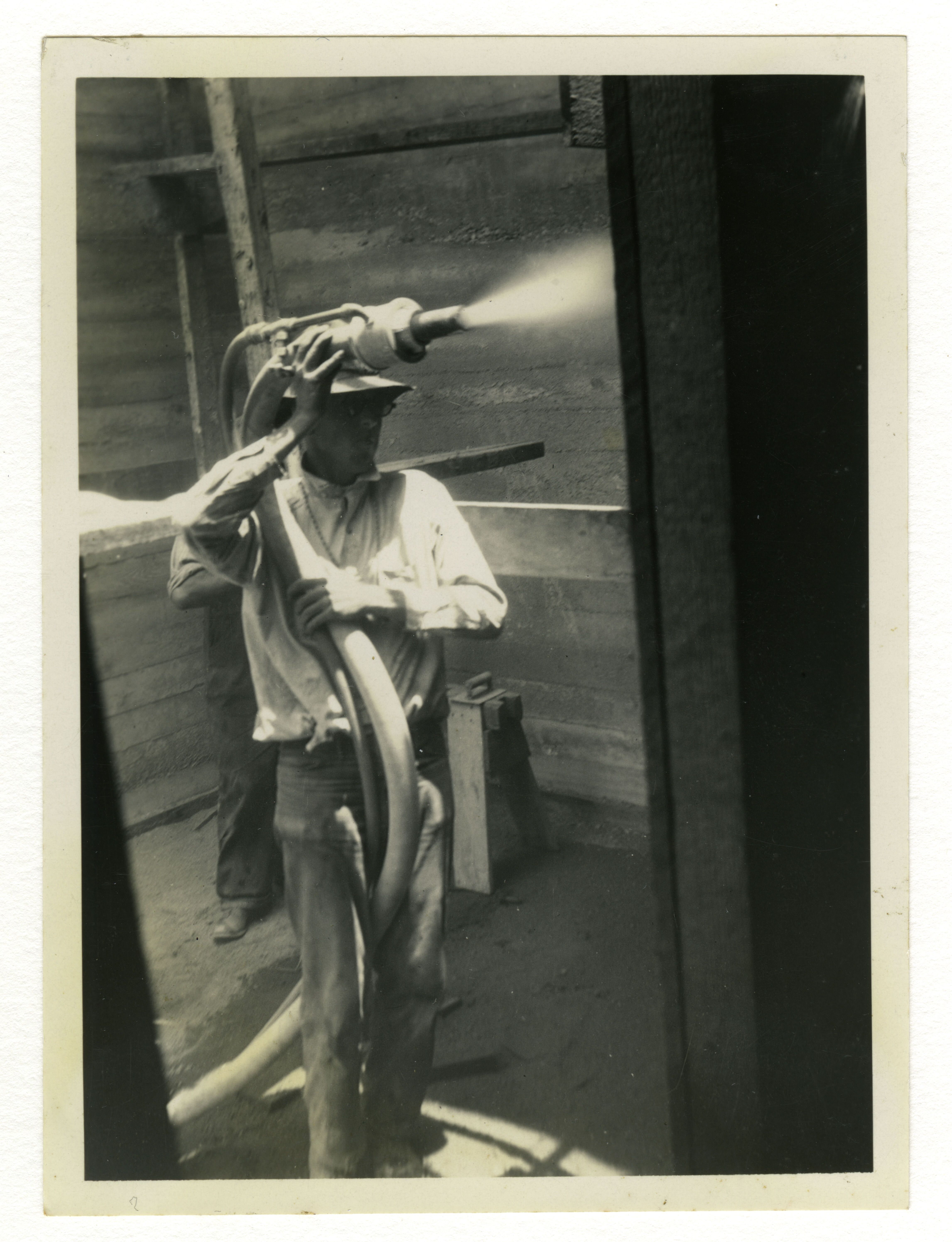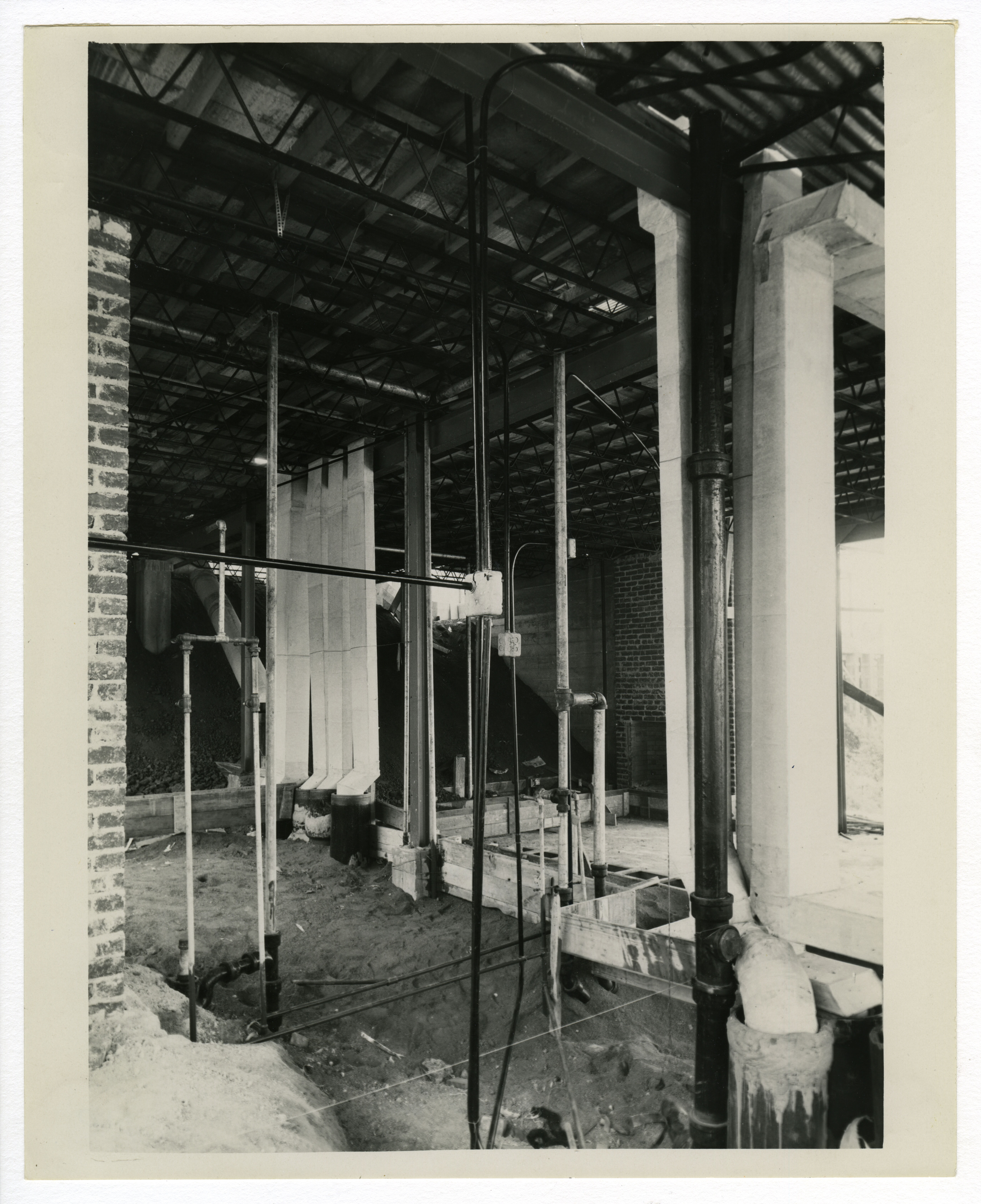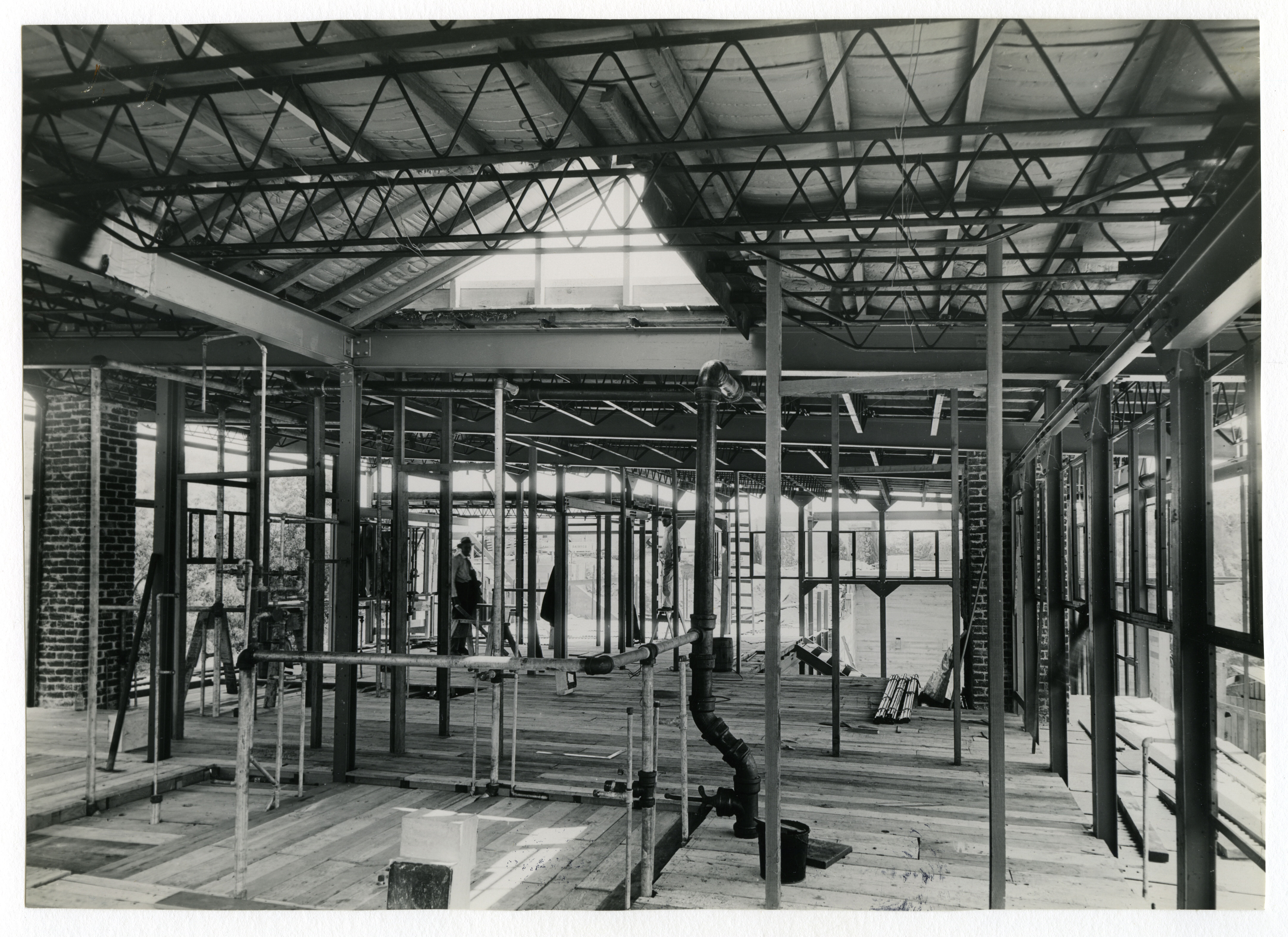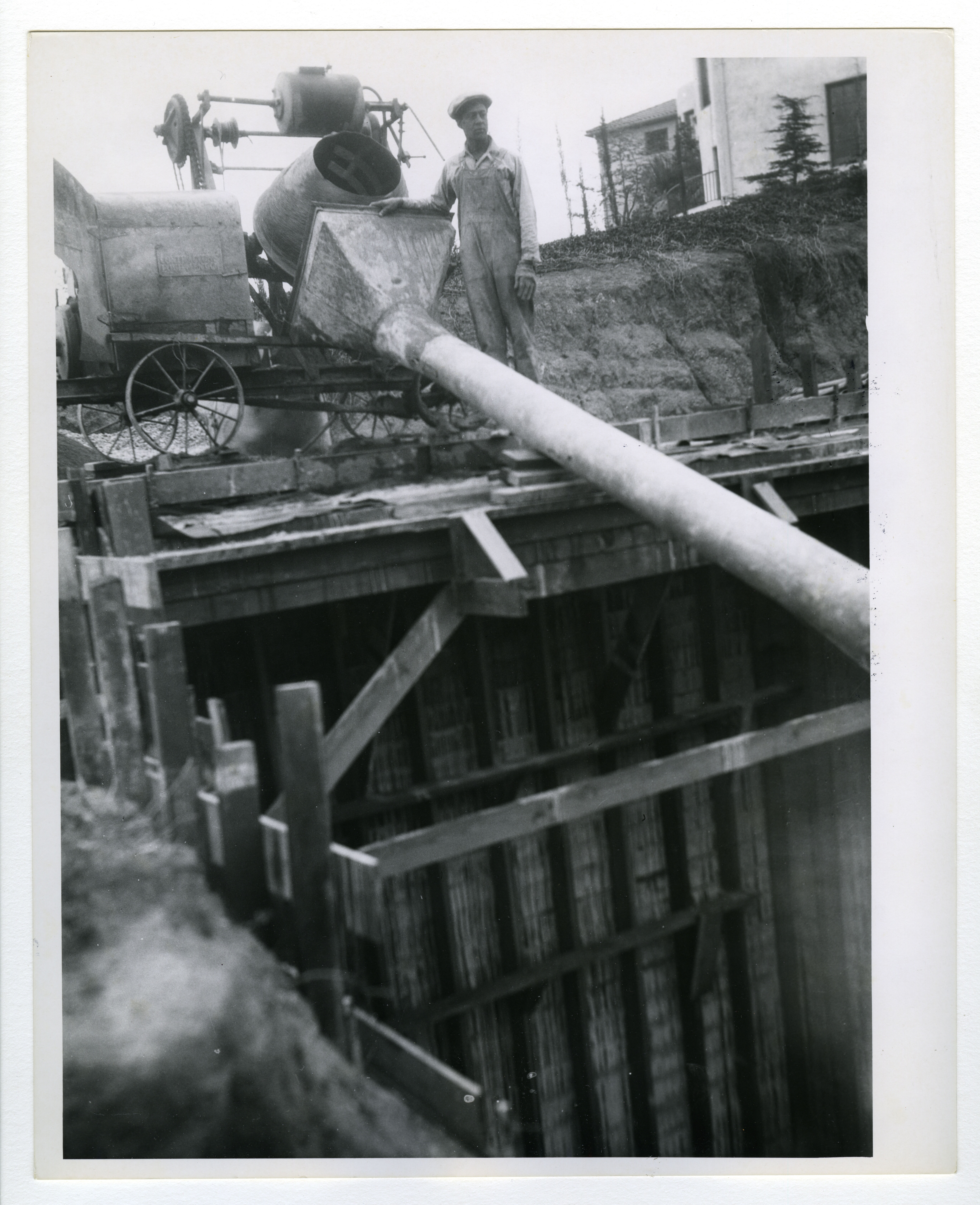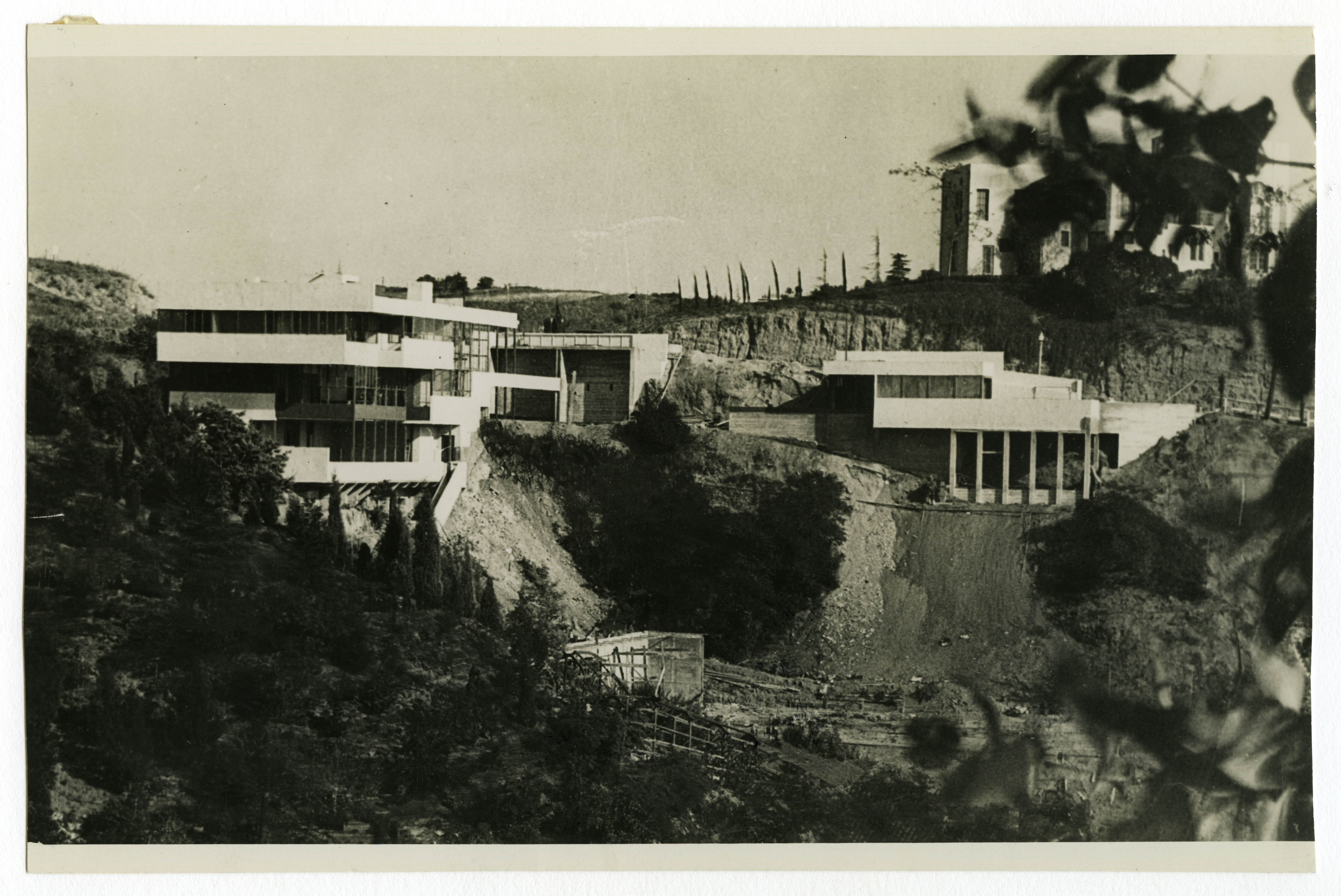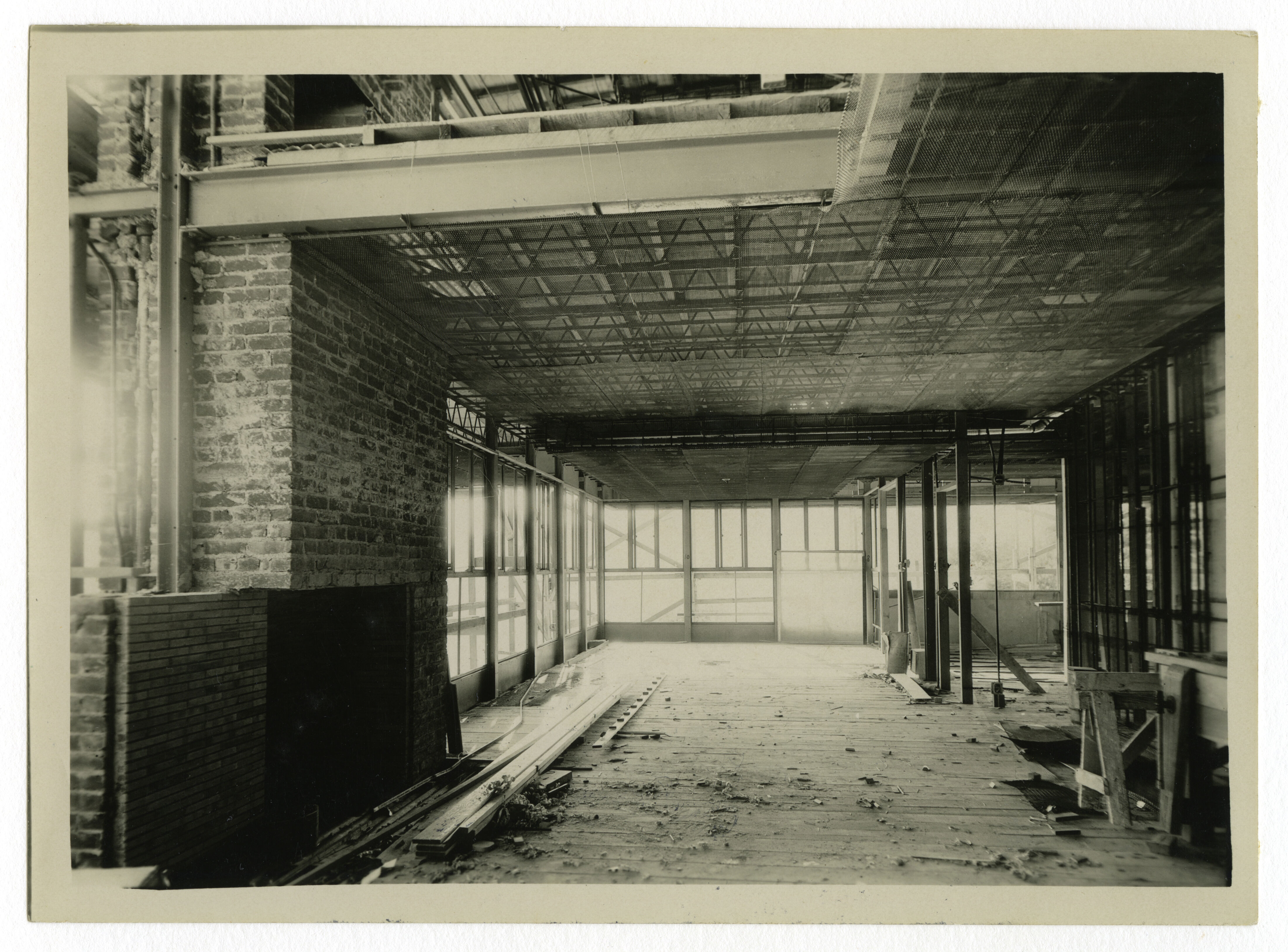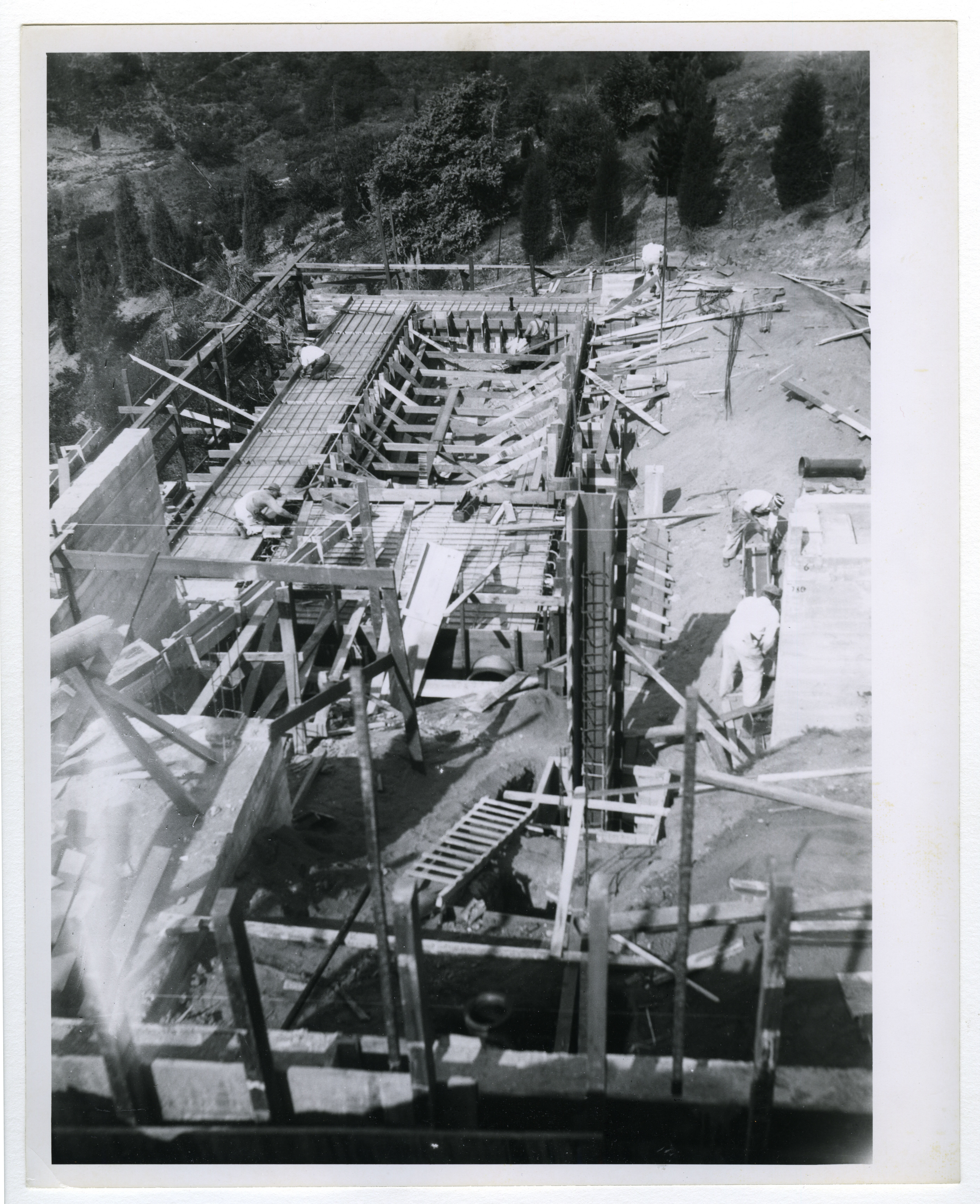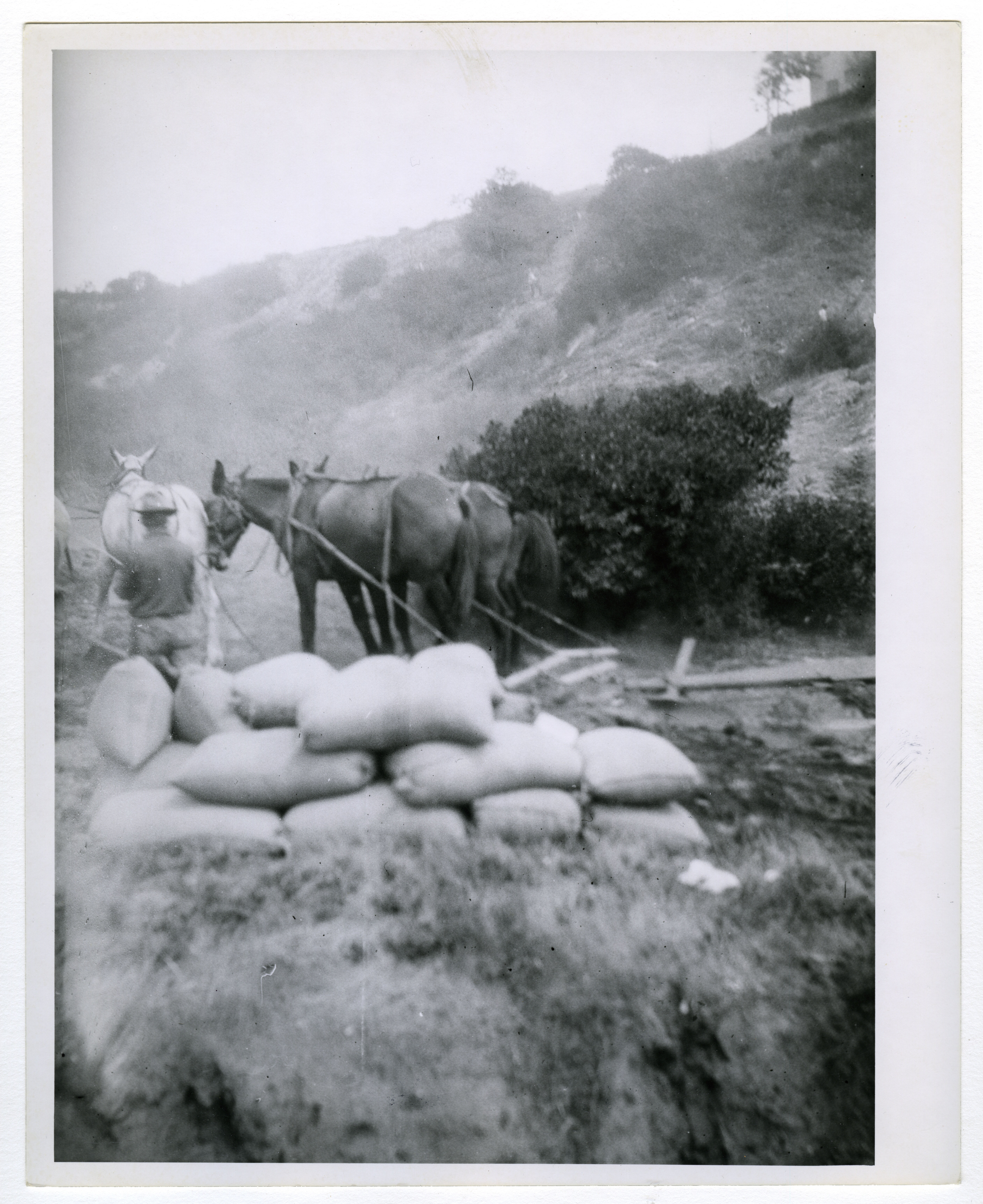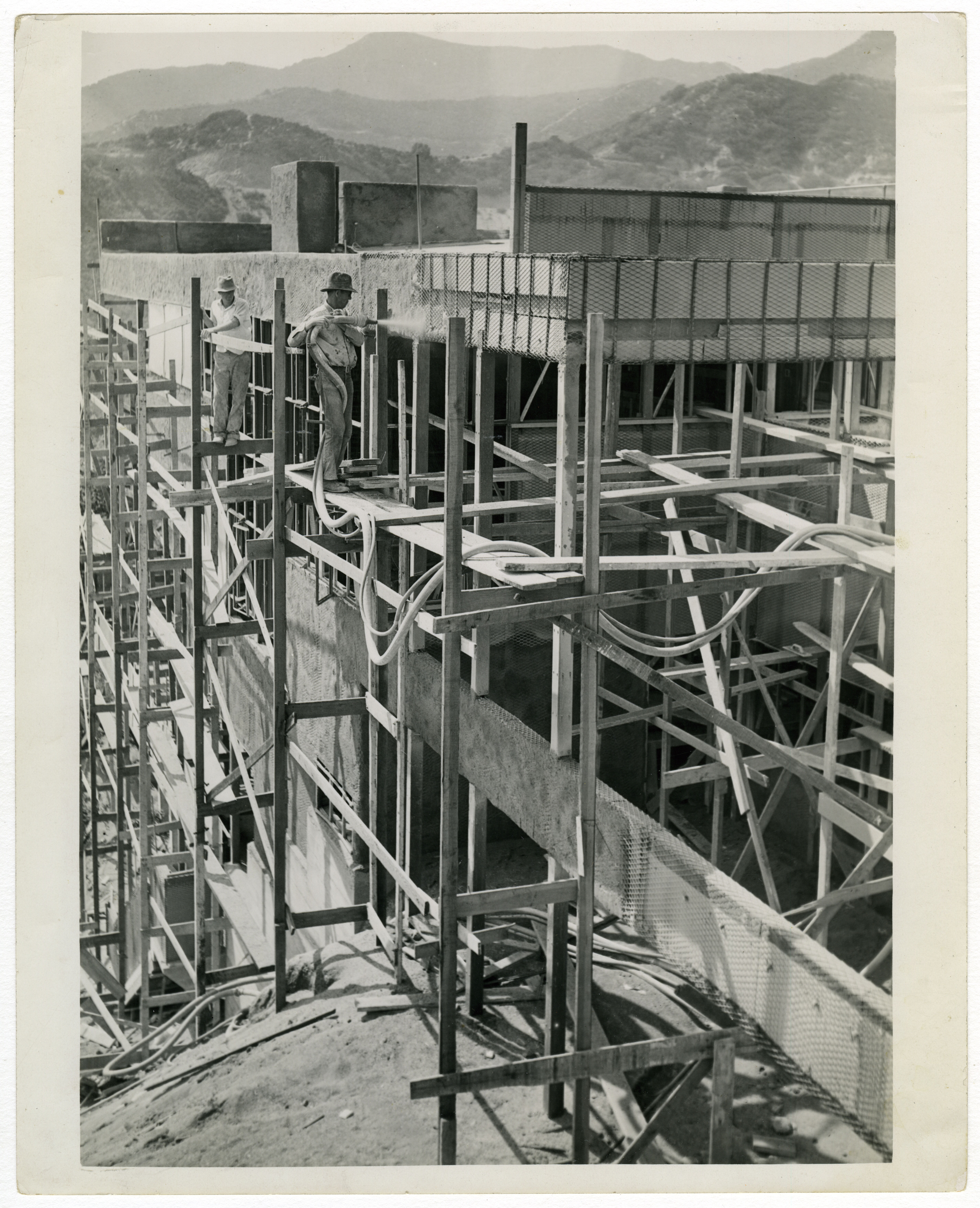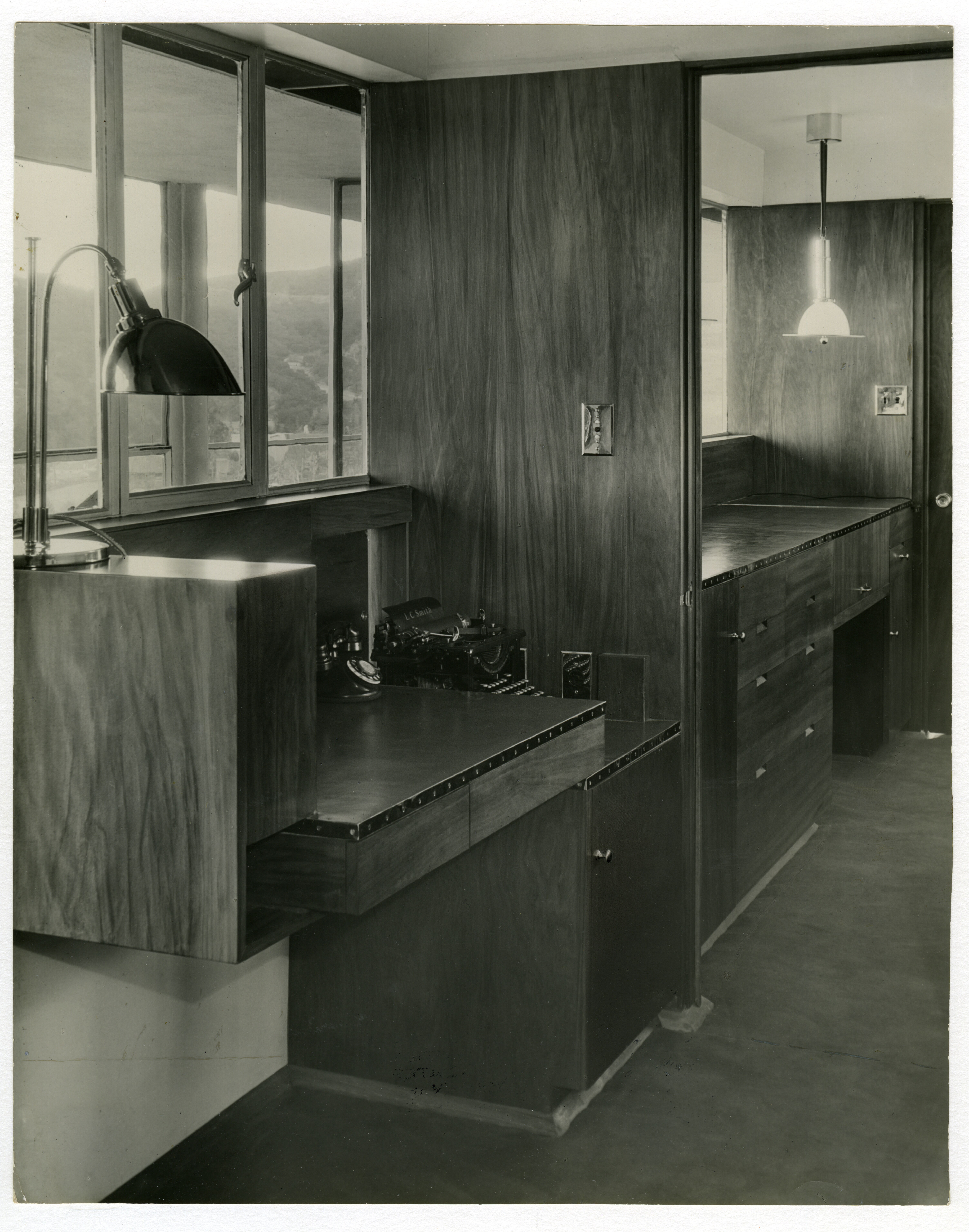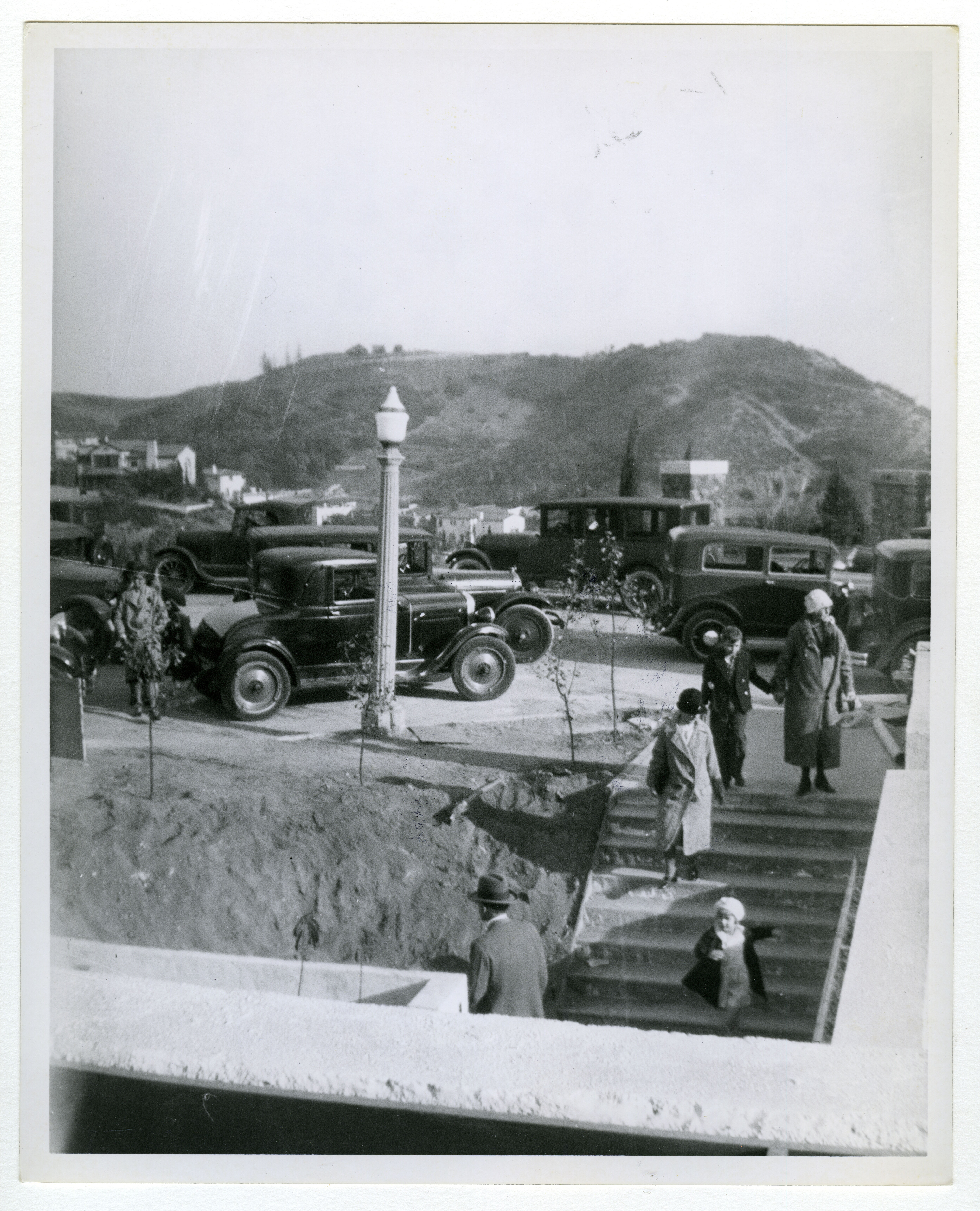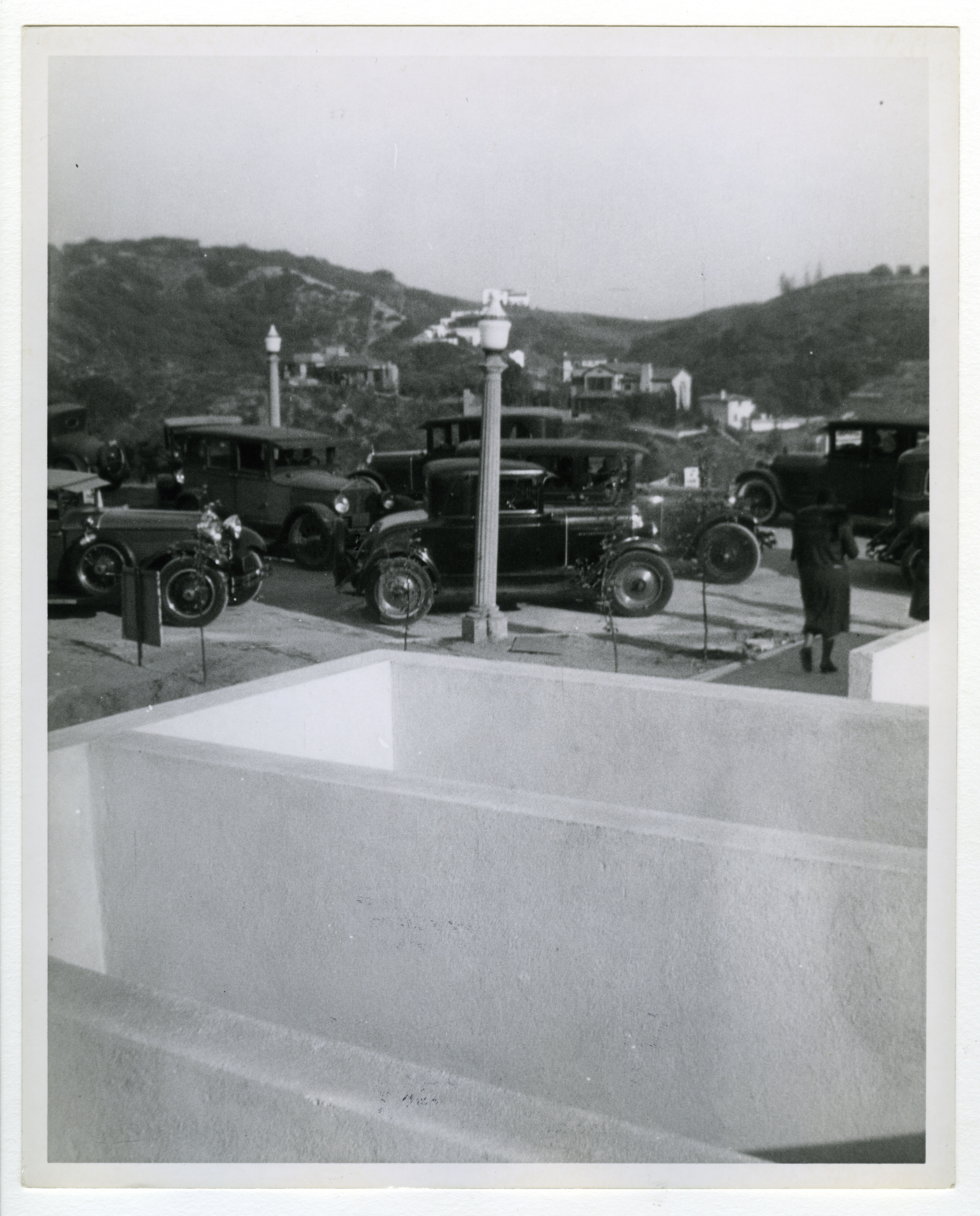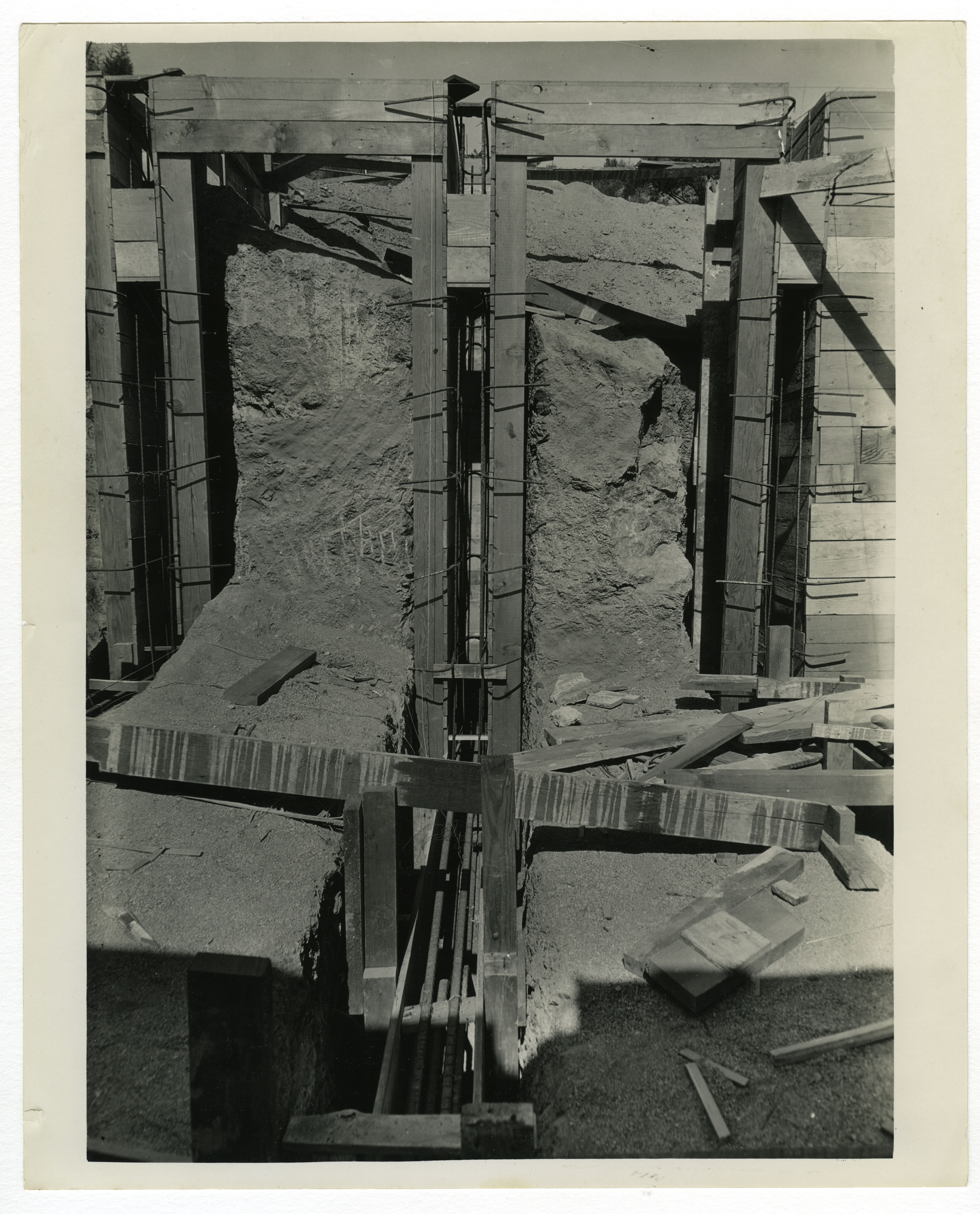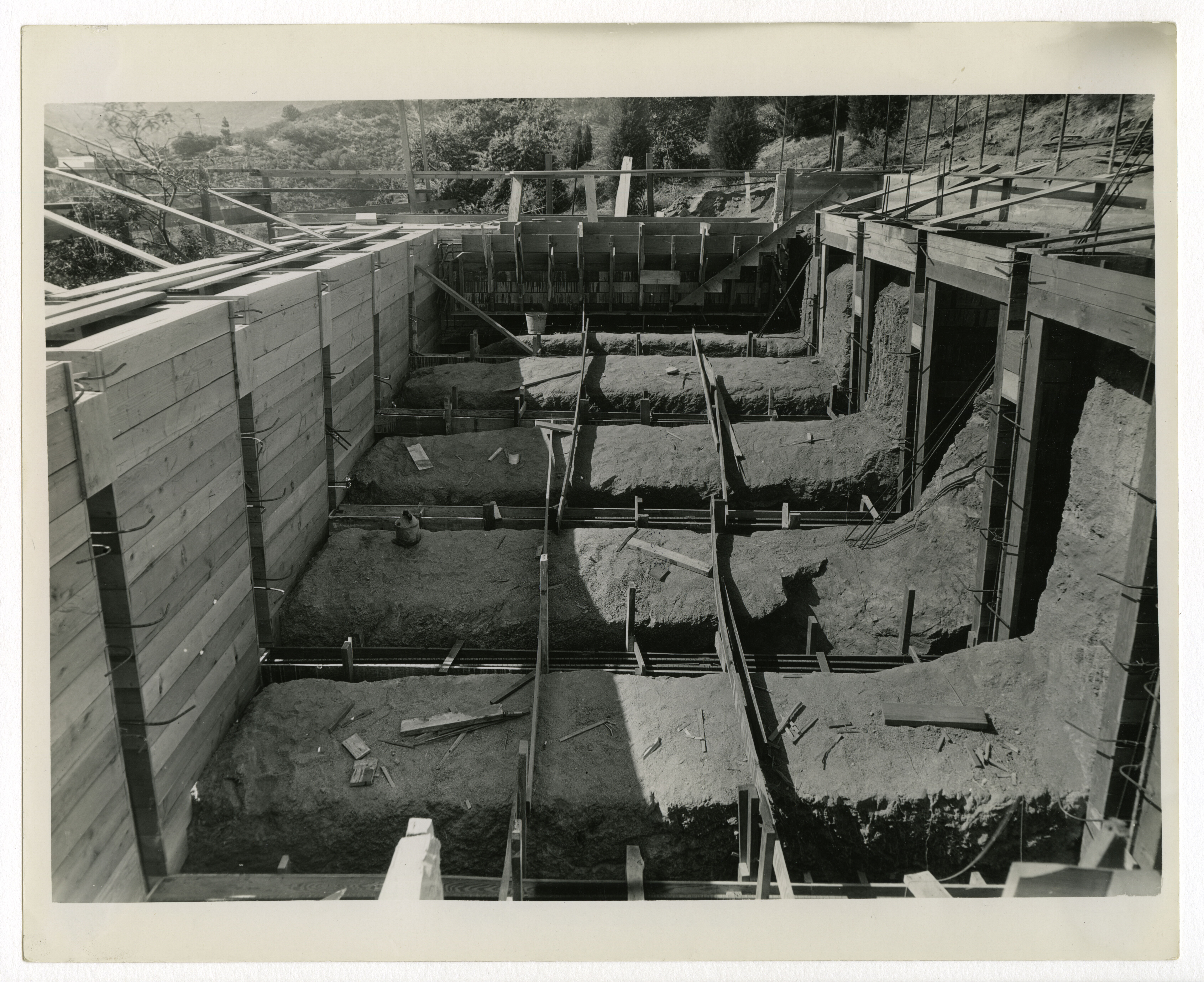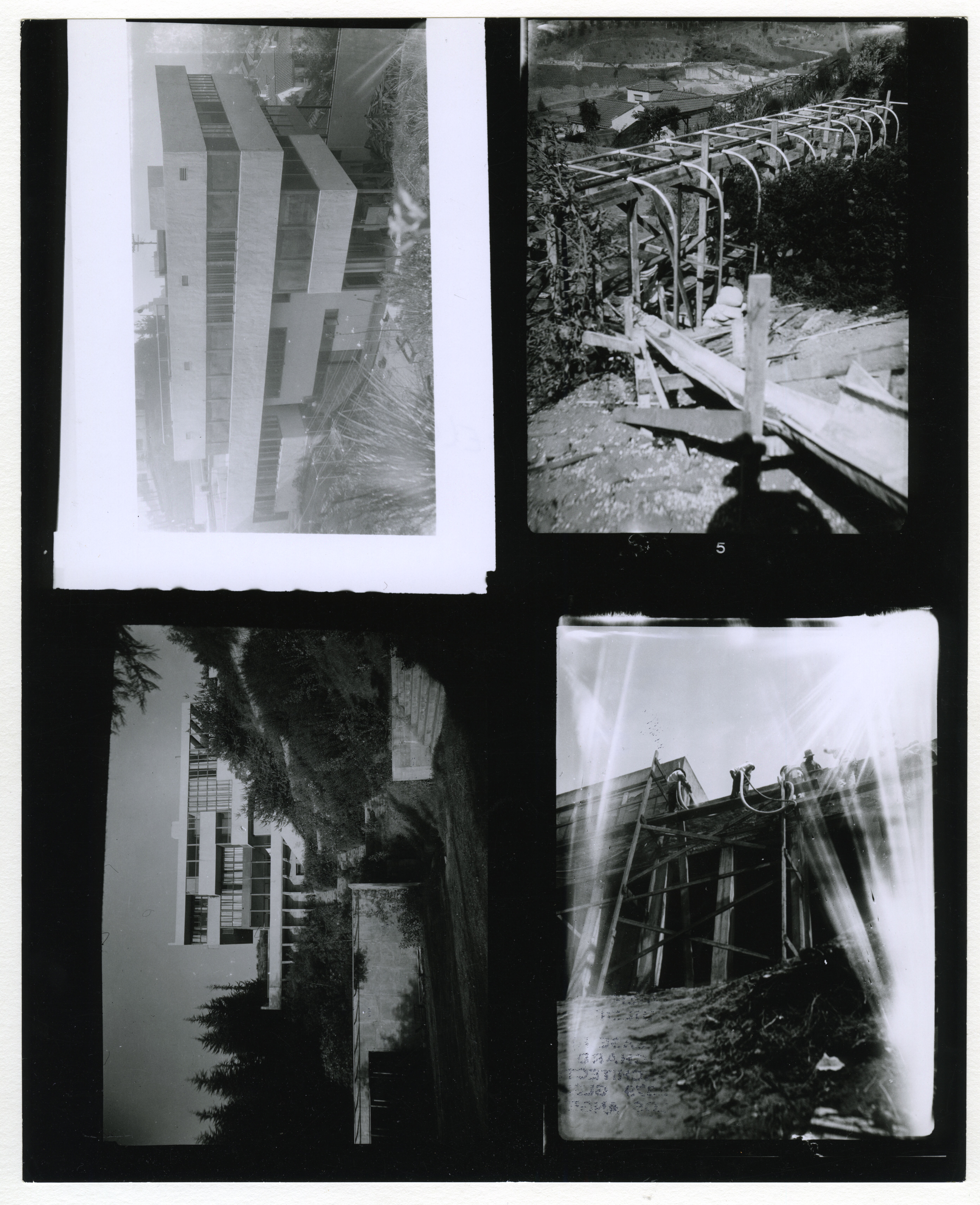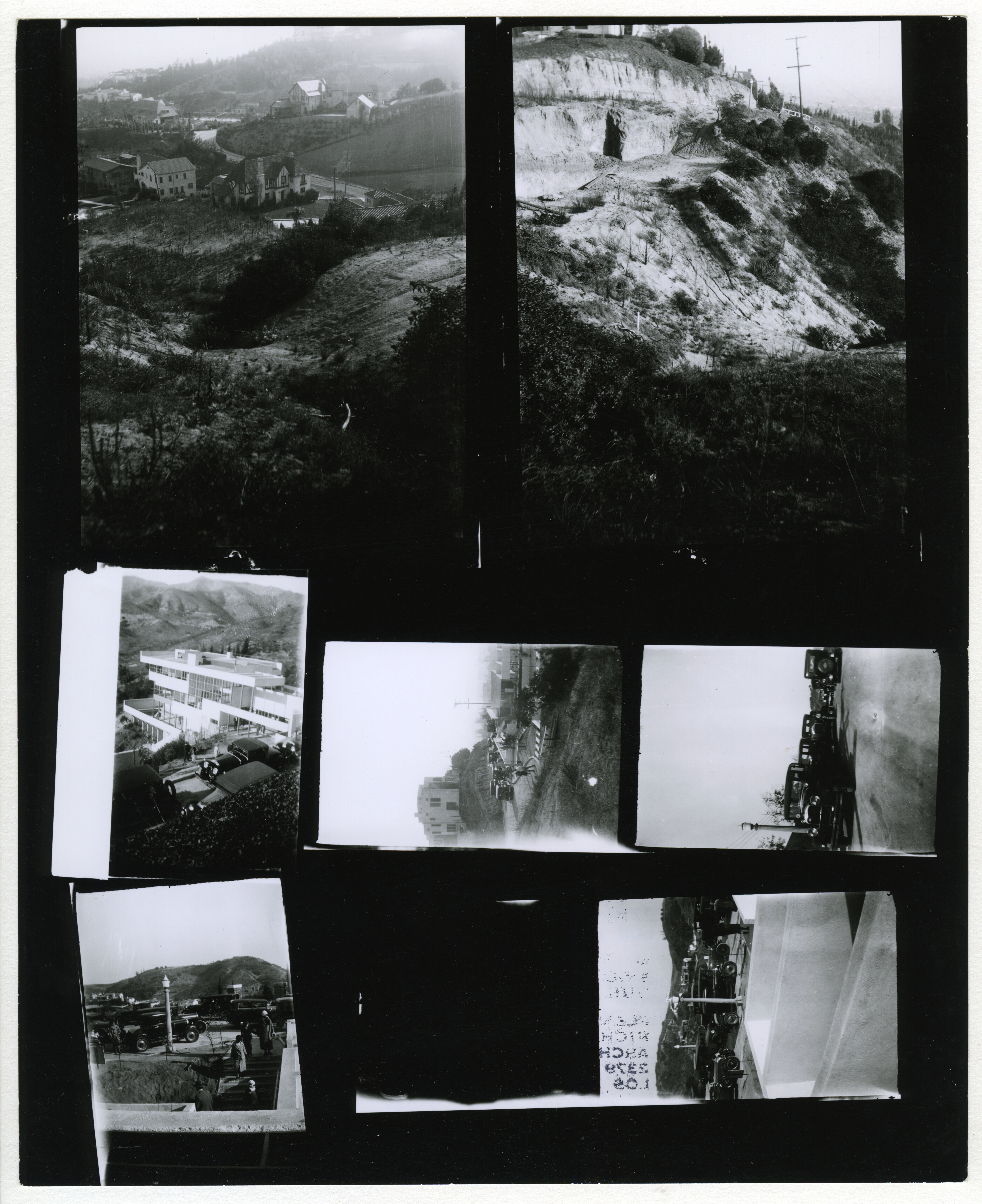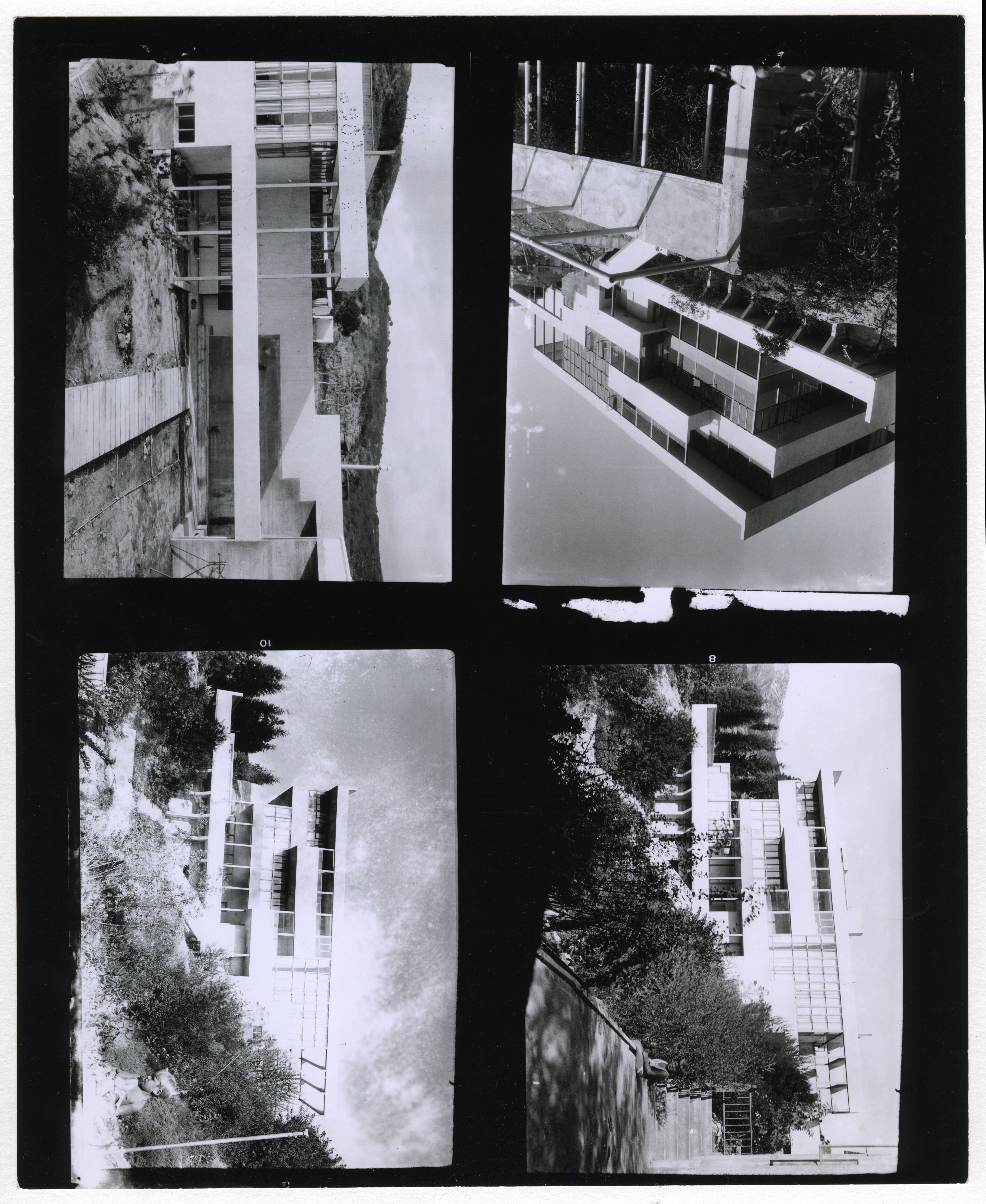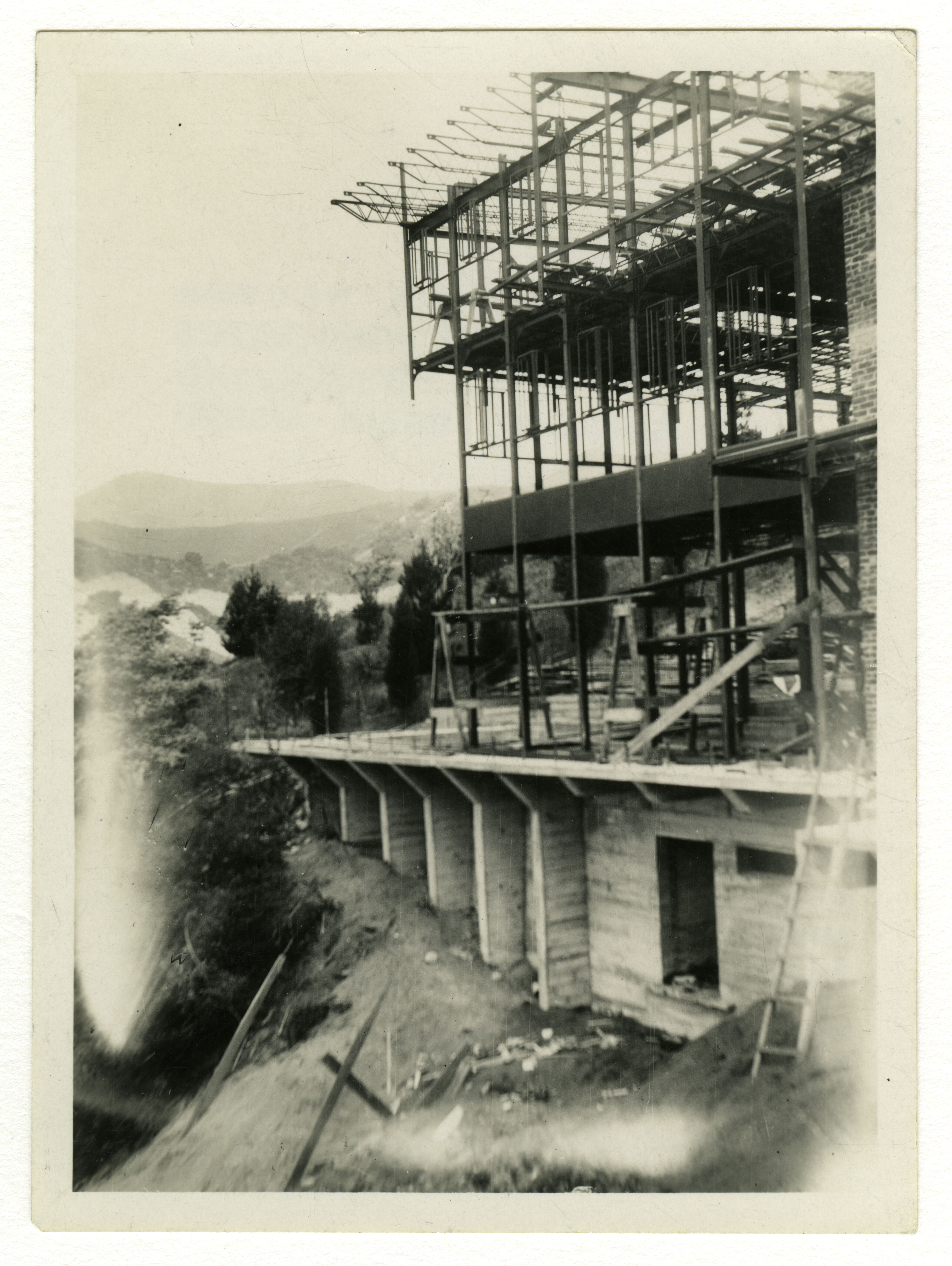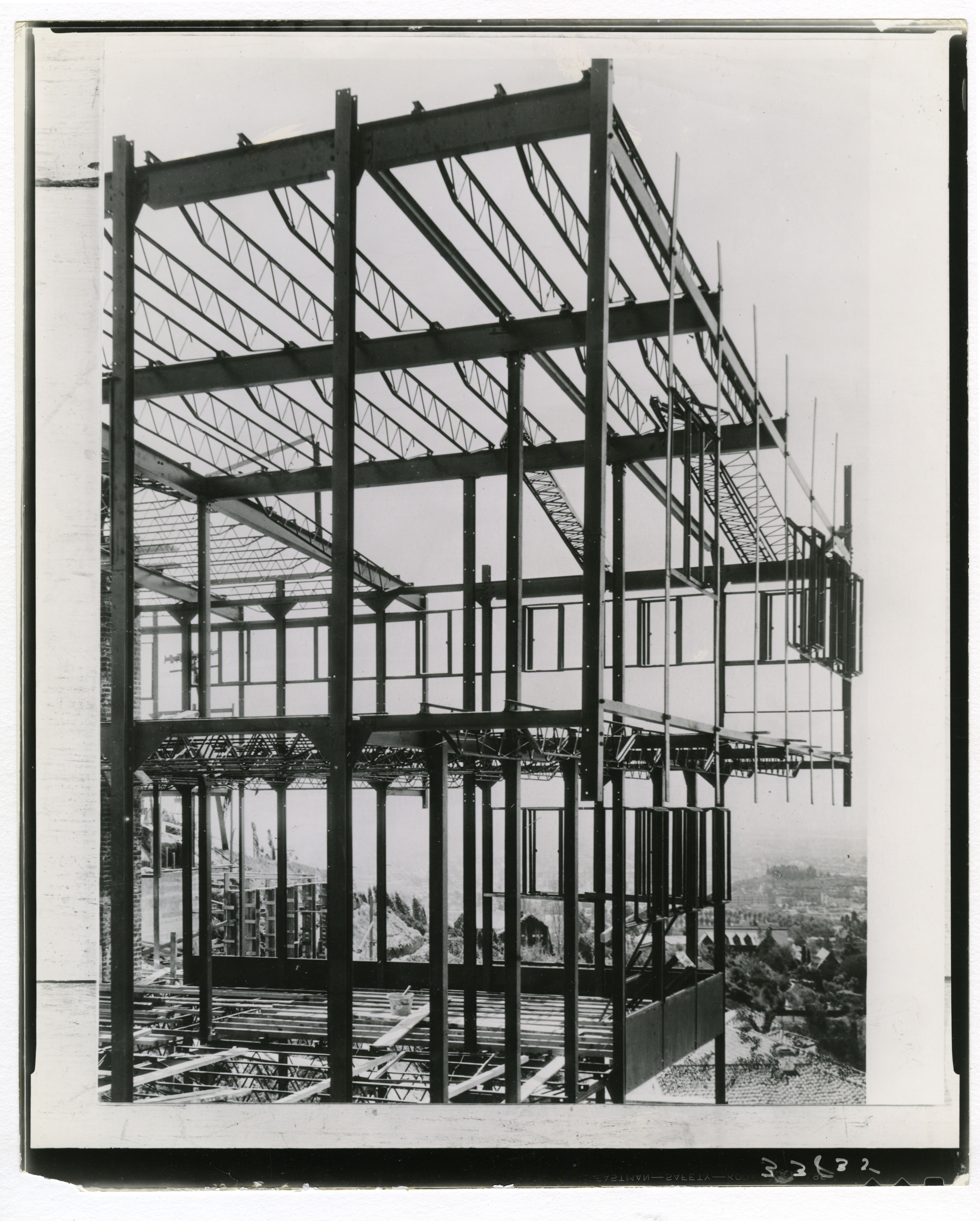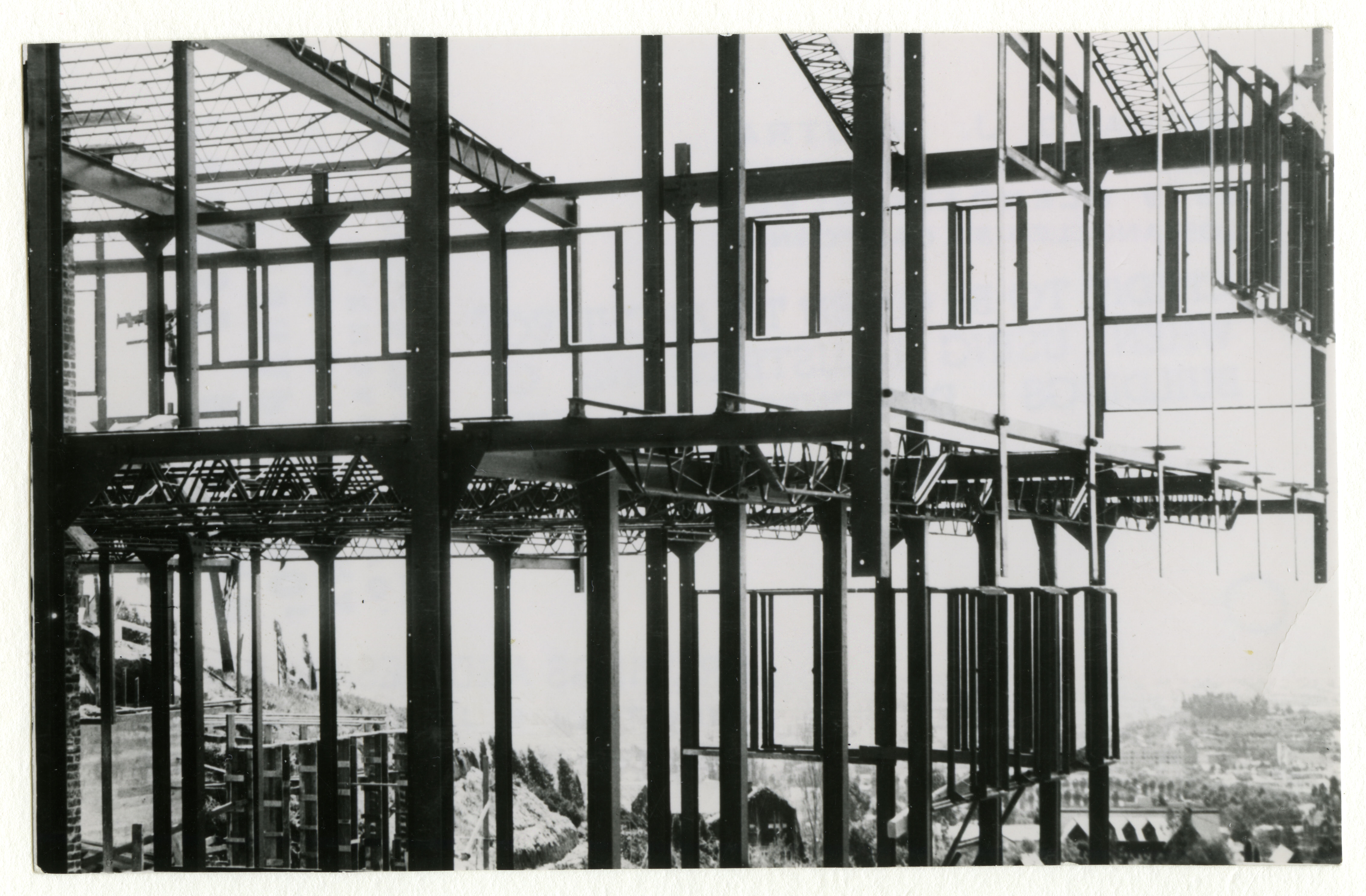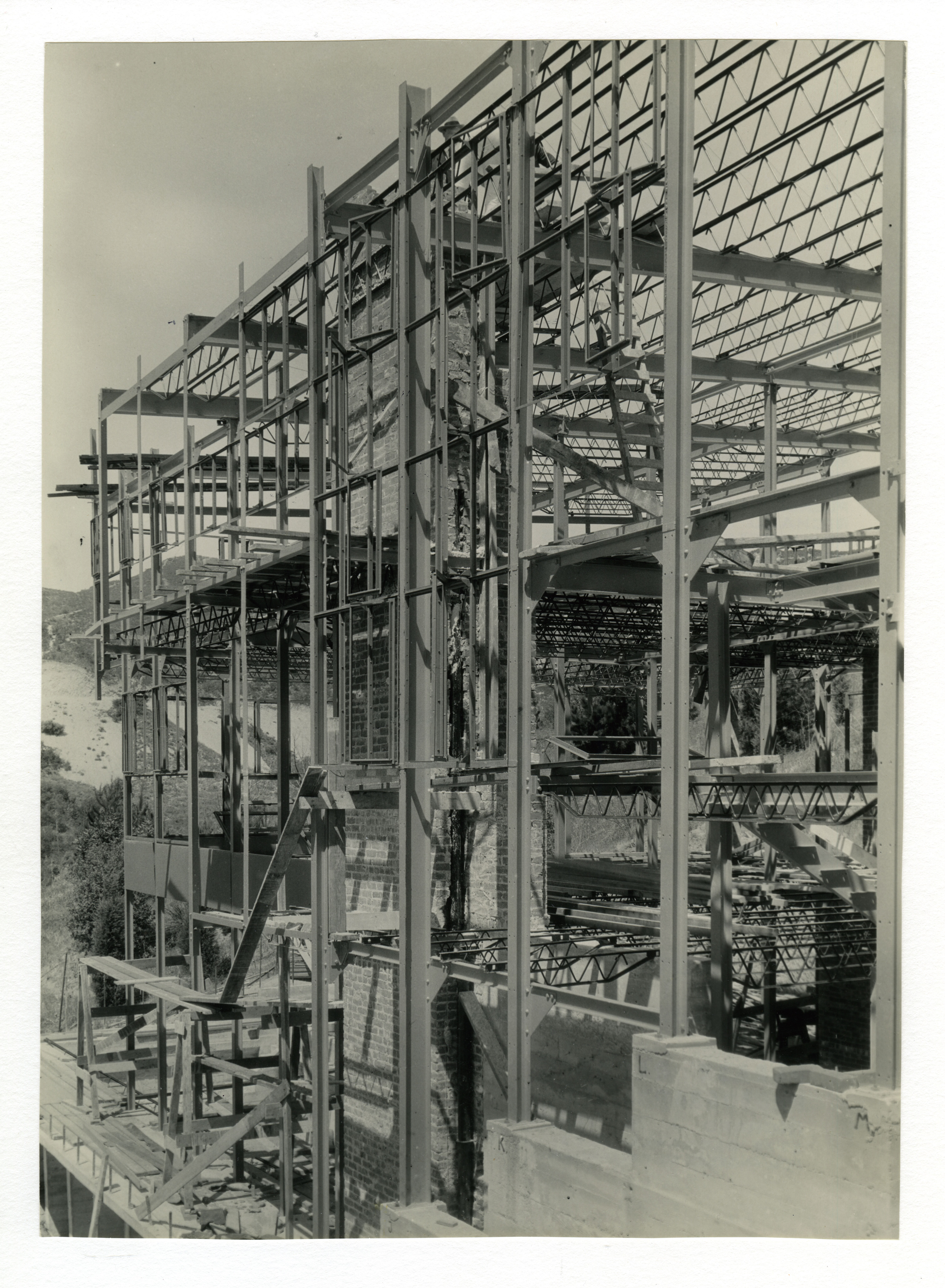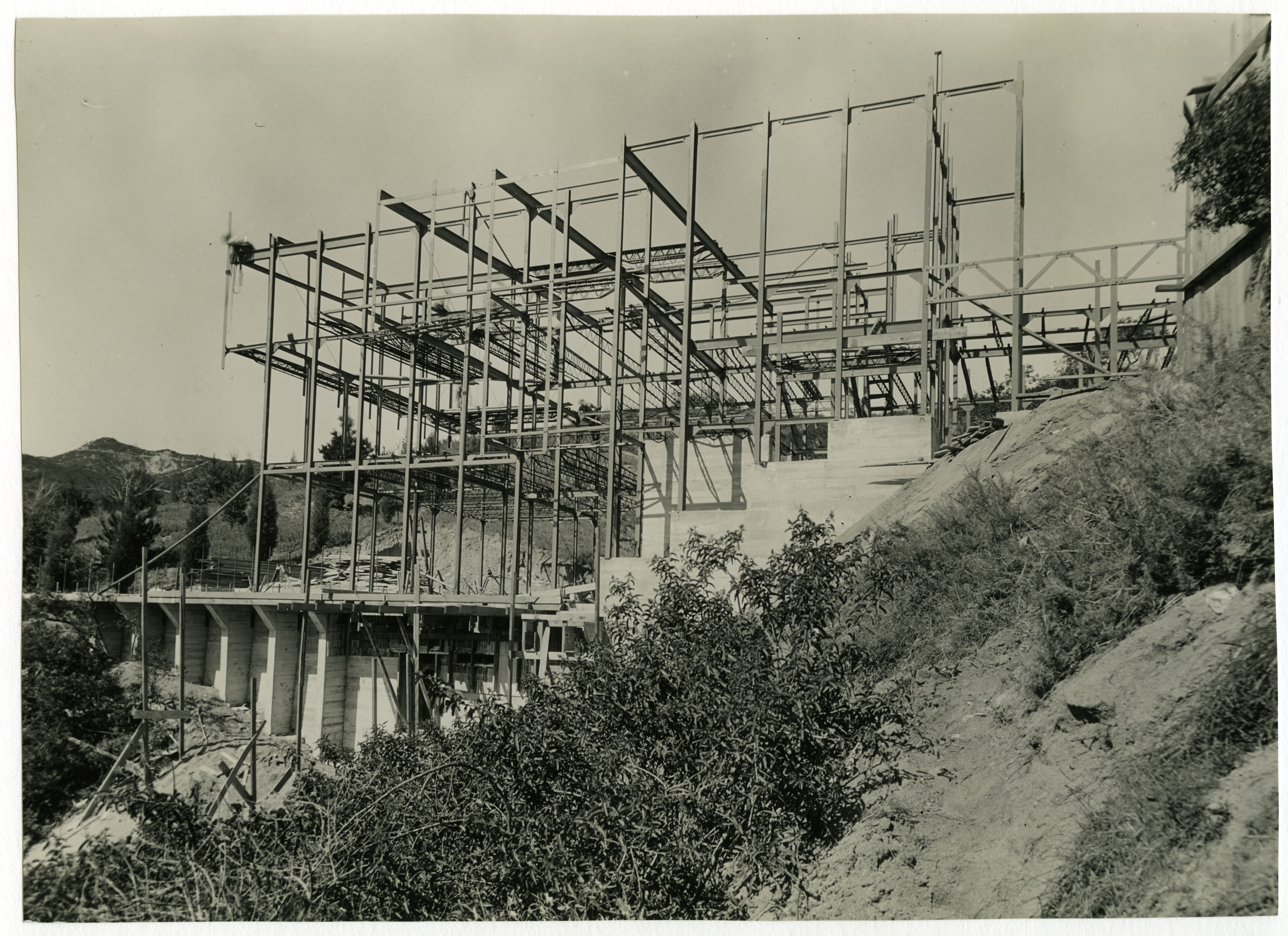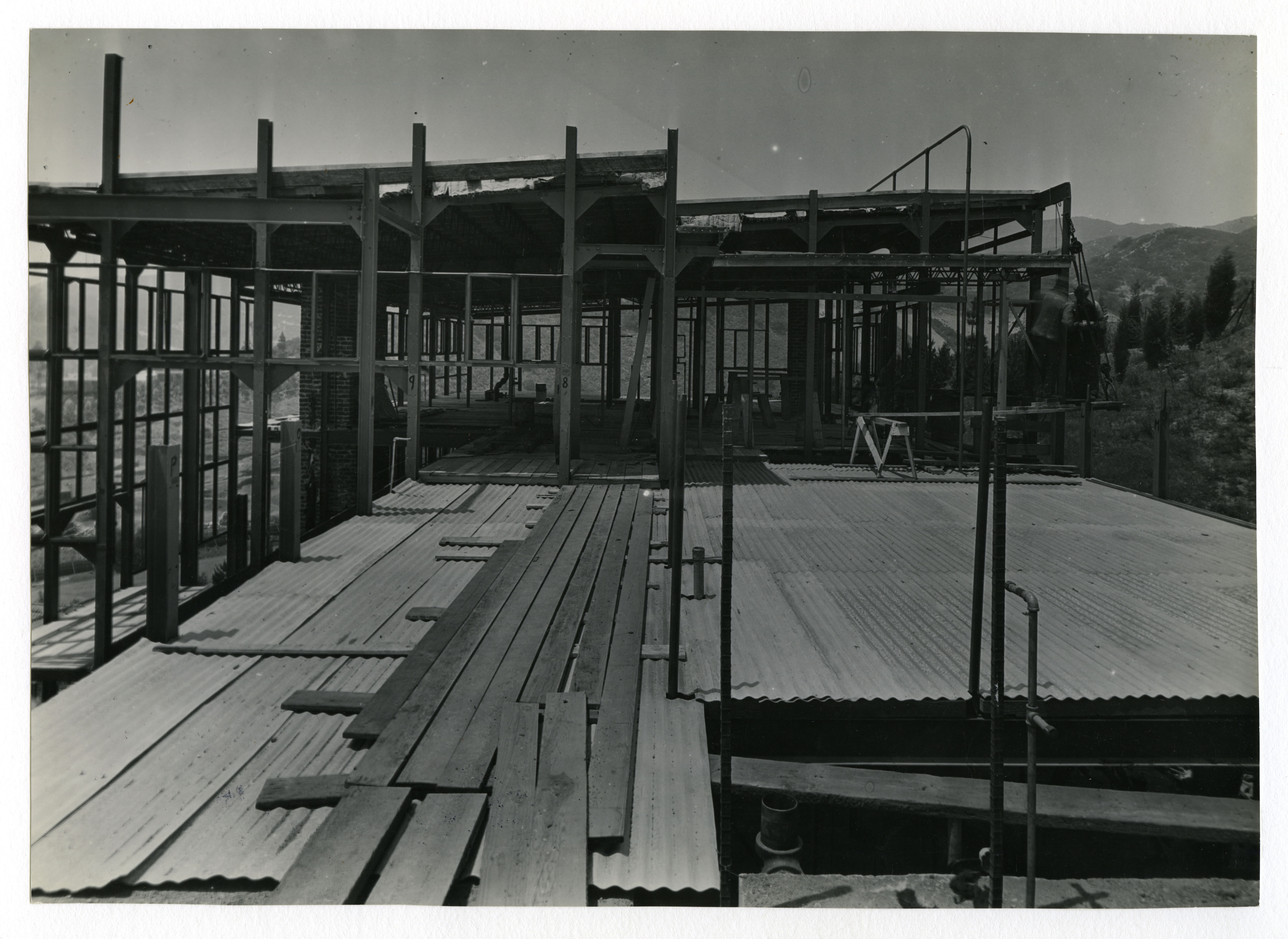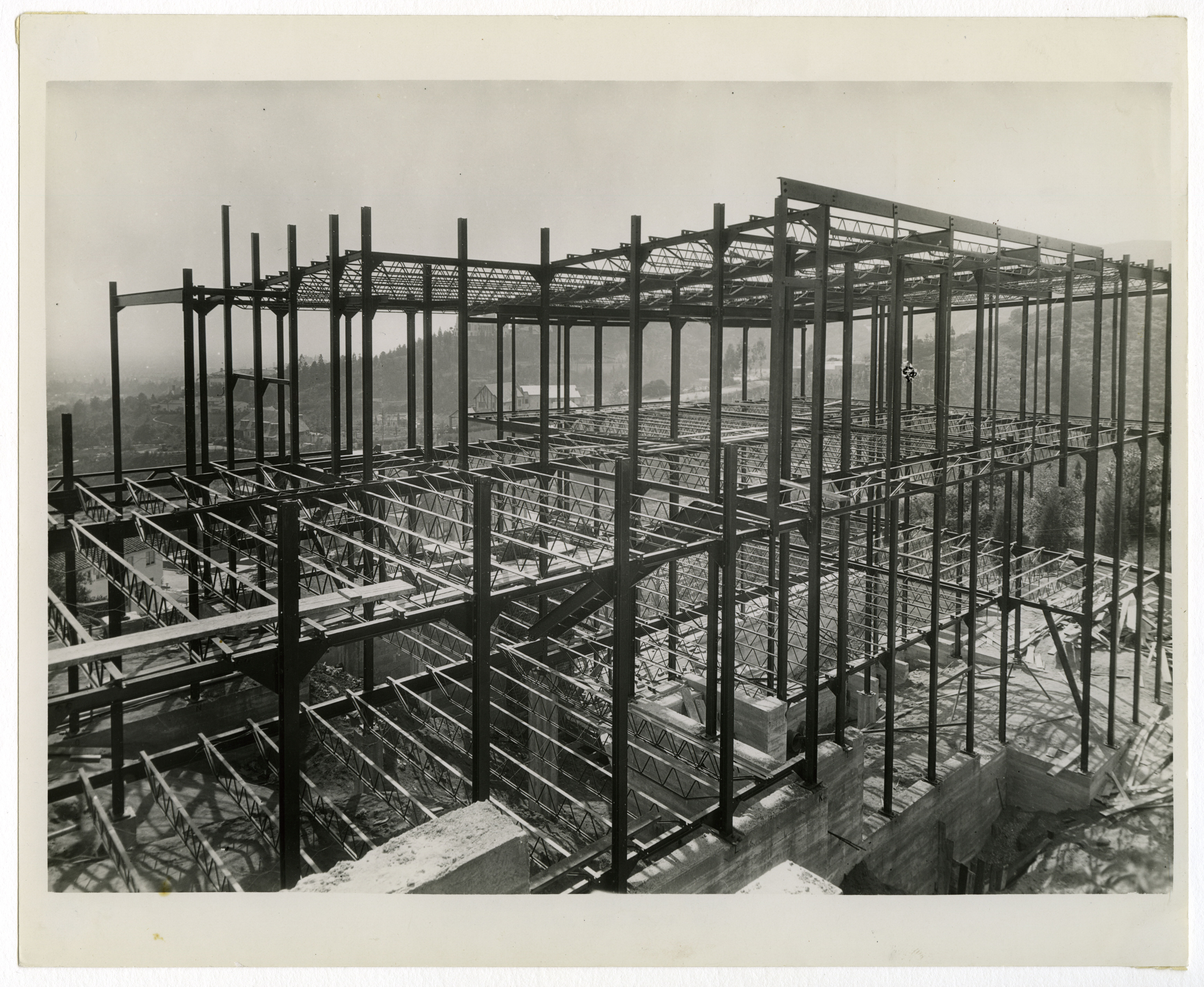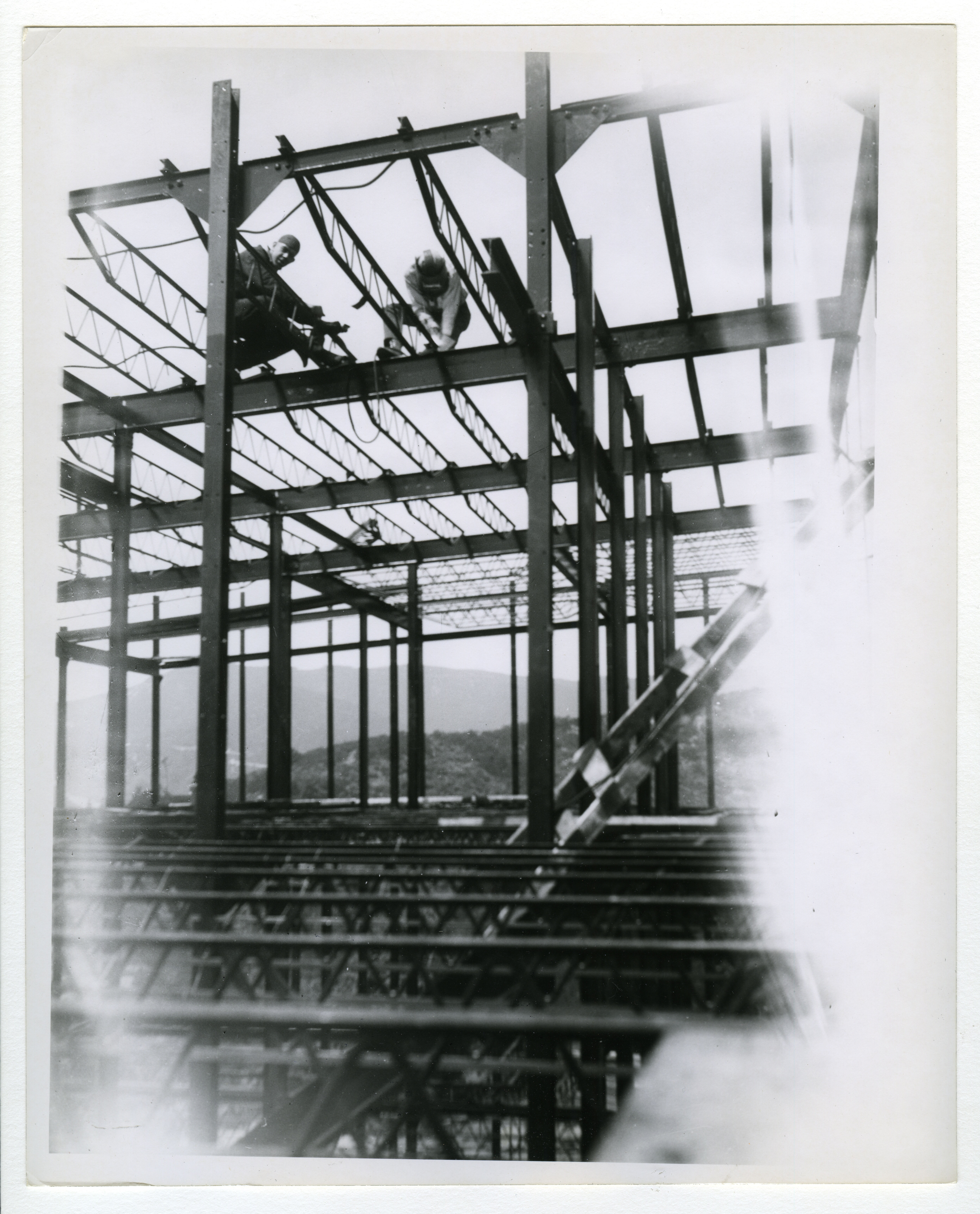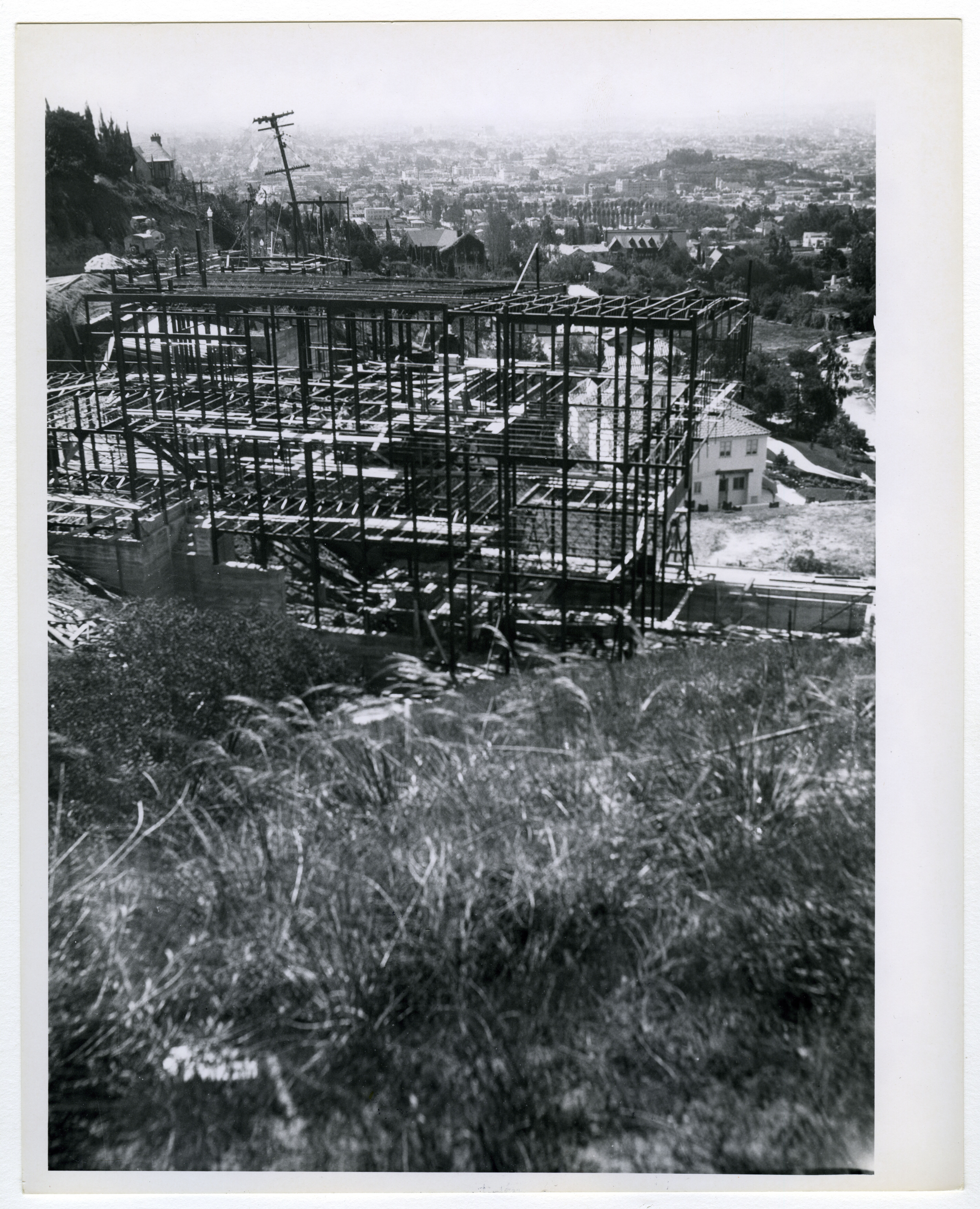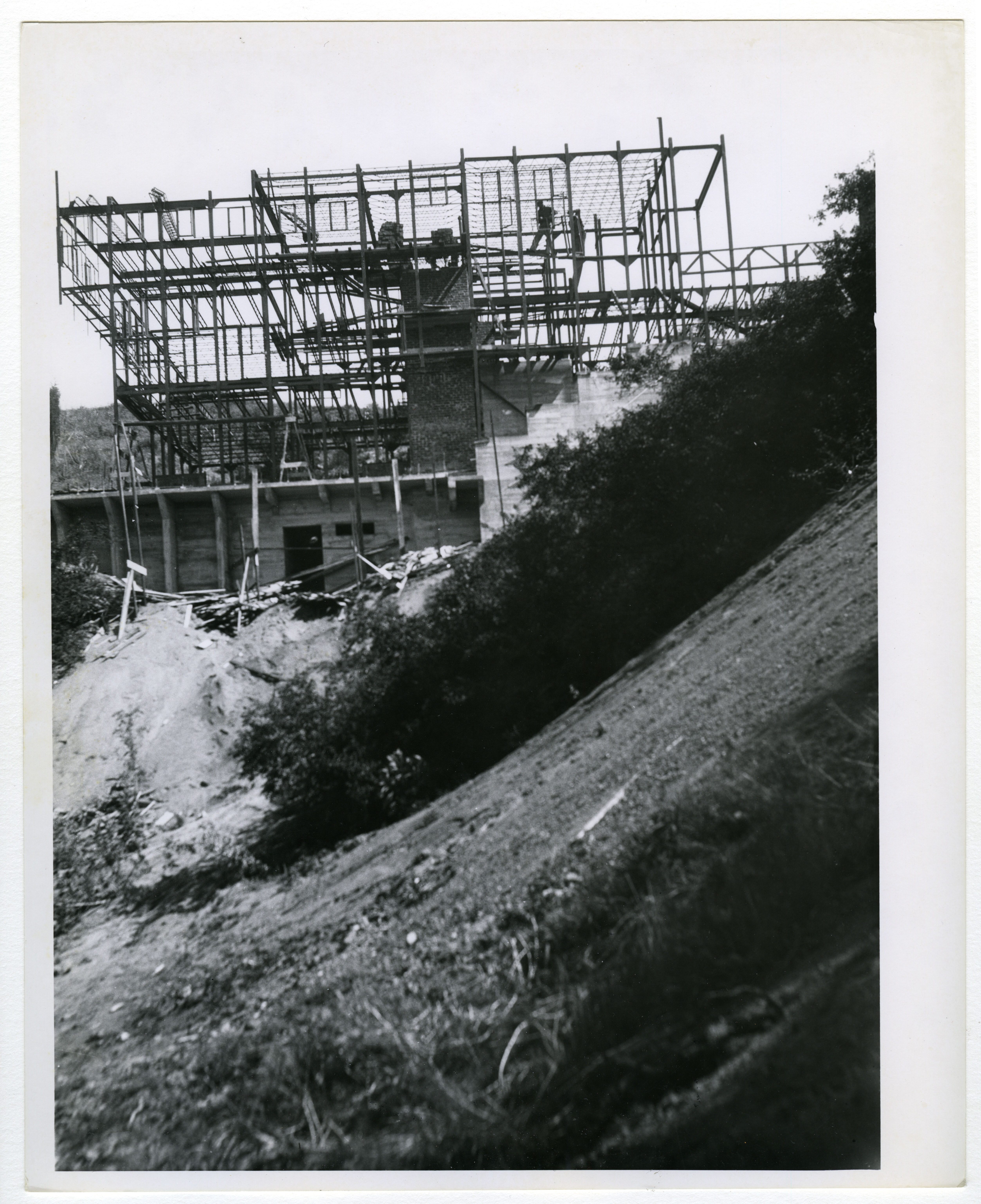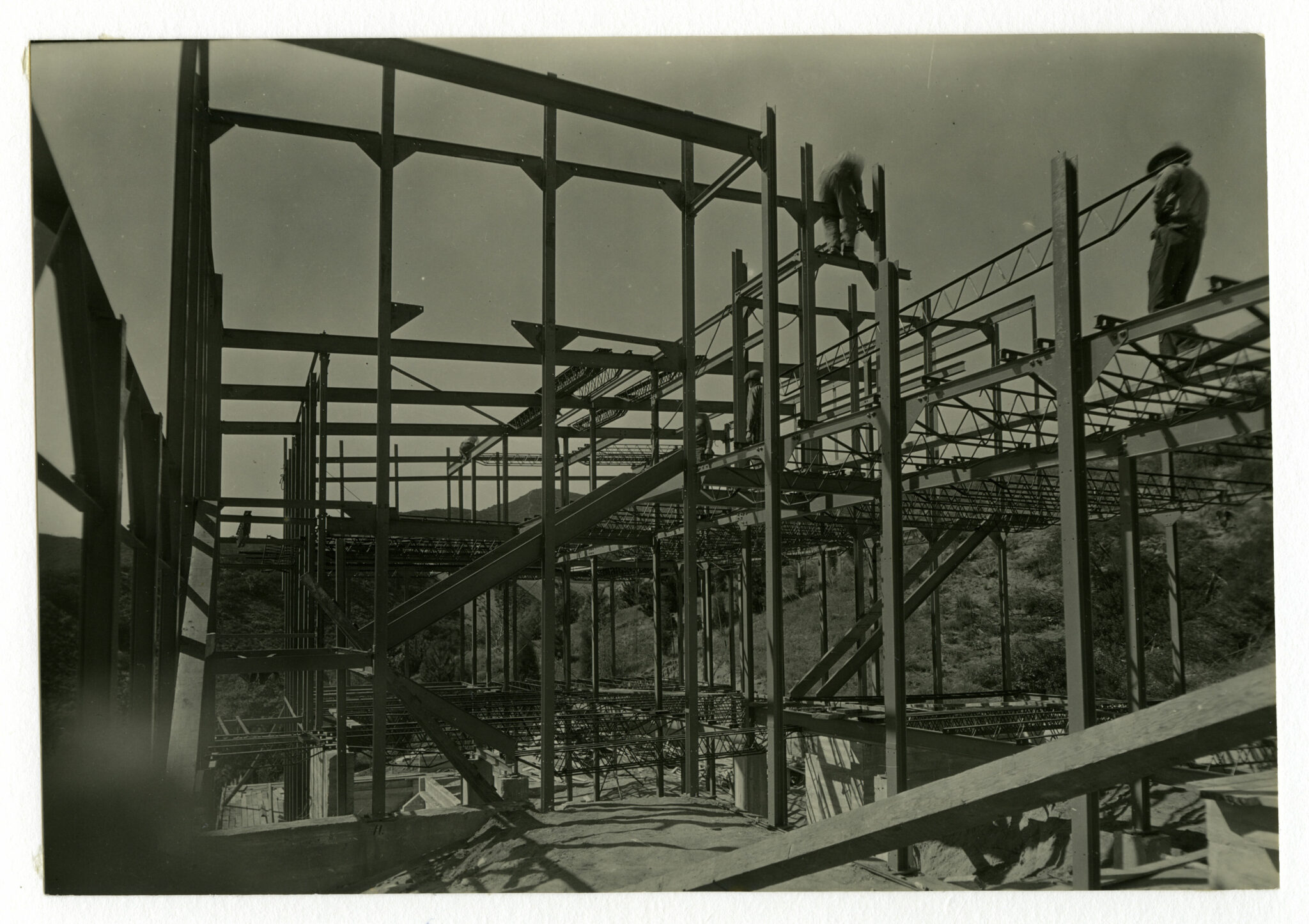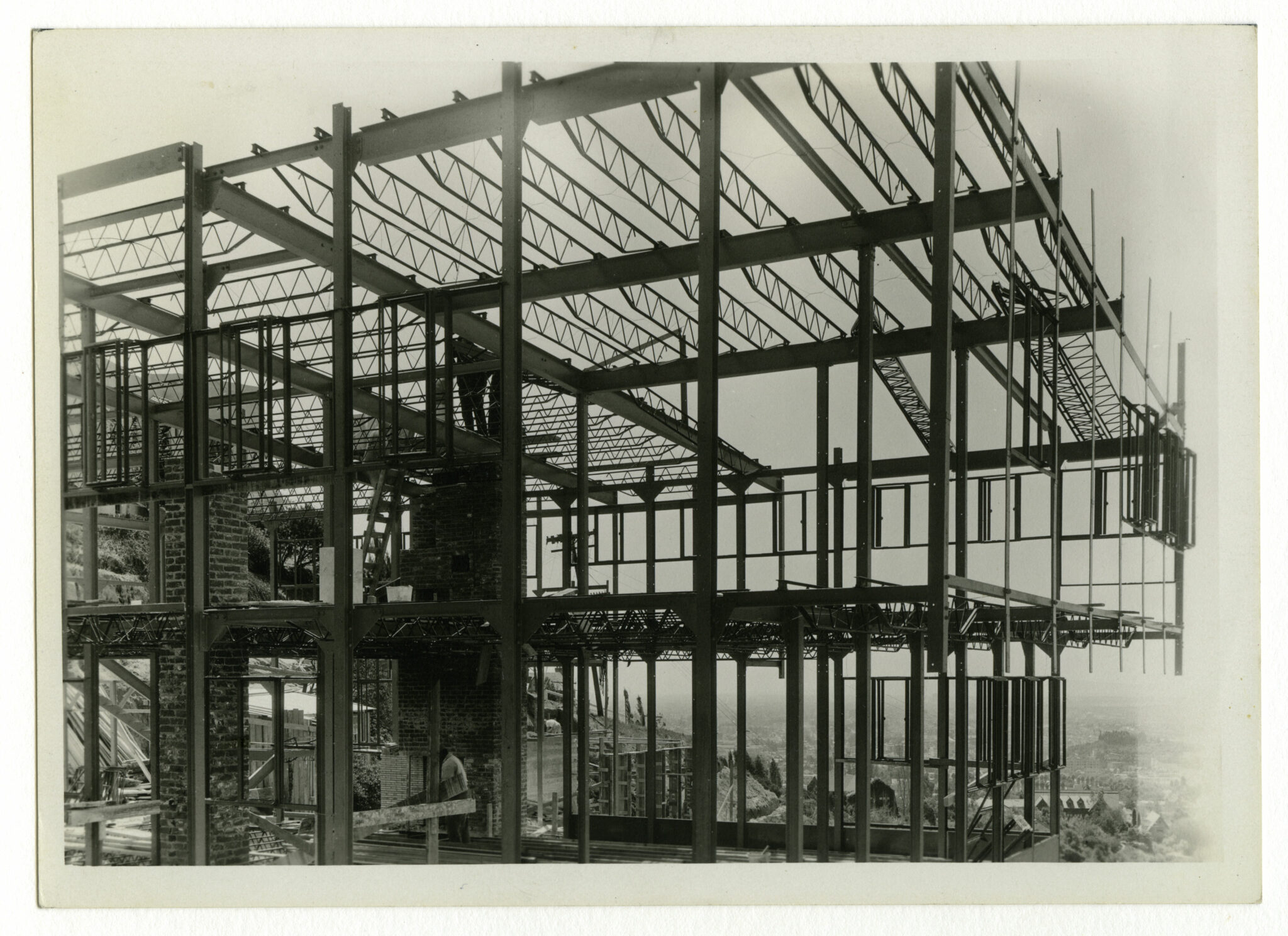Philip M. and Lea Lovell House (Health House)
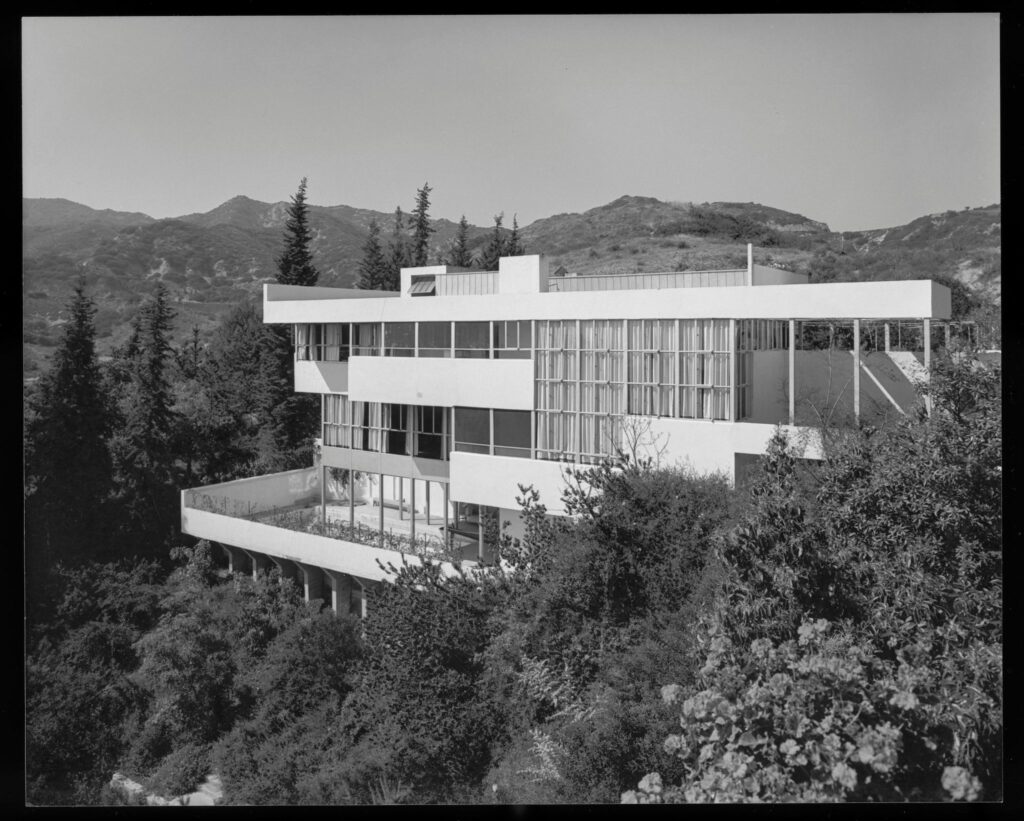
Philip M. and Lea Lovell House (Health House)
In 1962, 33 years after it had been completed, Neutra was invited by Bethlehem Steel to photograph the Health House. He hadn’t visited the house in so long he was startled by the lushness of the landscaping. “The steel building has been described in all its details in many publications around the globe, where it has been paralleled with the automobile, especially the Stuedebaker, President’s Straight 8 of 1928, designed in 1927,” he wrote in August that year. (The advertisement purred, “Richly appointed, strikingly modish body lines—as handsome a car as ever skimmed the boulevards.”) “It is queer and ridiculous,” he continued, “to see this car pictured side by side with the Health House, which has not aged at all in its spirit … Ideally speaking, if [man] would be properly housed, if all the knowledge and insight based on current research was worked into a health house, it is hard to see why it would have to change every spring and fall like ladies’ hats. It should inconspicuously support all its organic processes that underlie human life and all steel framing, all shot concrete, all plate glass are not a matter of fashion but an instrument in supporting vitality.” Neutra was delighted that the car was “long, long ago on the rubbish pile” while the building’s stylistic resilience pleased him not only as “an artist, but as an investment counselor,” which he believed was also the architect’s role.
Richard Neutra’s avant-garde approach to the Philip and Lea Lovell’s house resulted in a building years ahead of its time. The house stands precariously away from the steep hillside, as if it was barely connected to it. Despite the structure’s clean lines and clear form, a complicated steel frame underpins this aesthetic of simplicity. Construction photographs lay this substructure bare, including one that pictures steel casement windows which, attached to thin vertical stays, seem to float between larger steel columns and I-beams. Neutra was not only rethinking architectural paradigms but construction processes too, and he served as general contractor, presiding over a workforce of seventy men who he taught commercial techniques he had learned in Chicago and while writing Wie baut Amerika. Departing from typical residential standards, the team fashioned an extensive network of scaffolding which allowed the concrete to be channeled outward or down from the top of the hill where it was mixed via a wooden shoot two-hundred feet long. To minimize the number of foundations transmitting the weight of the home onto the landscape, a single concrete foundation supported both the house and pool, which was formed around a steel cradle. Above, Neutra constructed a grid system with numbers and letters with lines of thread, denoting the locations of columns. In addition to taking on all aspects of the house’s design and construction, Neutra looked to the future, providing the Lovells with instructions about care and upkeep, including the import of sealing the roof to retain its waterproofing capabilities. The house was well received worldwide by various publications and frequently celebrated as the domestic equivalent to the automobile, particularly the Studebaker. Despite these reviews, which were oriented around a contemporaneous fashion for all things steel, Neutra insisted that a good house was not an artifact of a single moment in time but rather enduring constant in its ability to provide for a person’s needs. Indeed, when the Studebaker fell out of fashion, the Lovell House persisted. Thirty-three years after its completion, Neutra was invited by Bethlehem Steel to photograph the house, and, while startled by the lushness of the landscape that had emerged in the intervening years, he found the house unchanged in its minimalist modernism.
Adapted from Neutra – Complete Works by Barbara Lamprecht (Taschen, 2000), p. 91.
Project Detail
Year Built
1927–29
Project Architect
Richard Neutra
Client
Philip M. and Lea Lovell
Location
Los Angeles, CA
